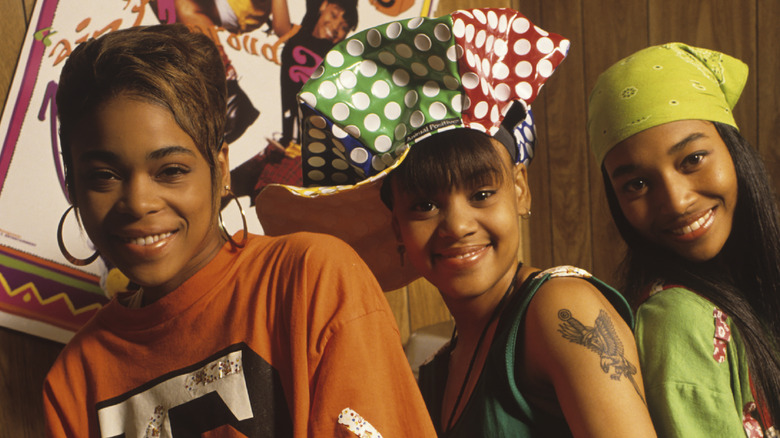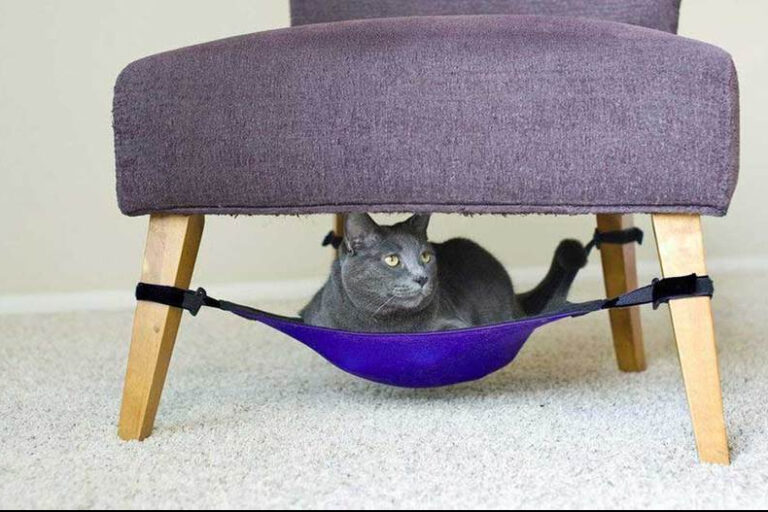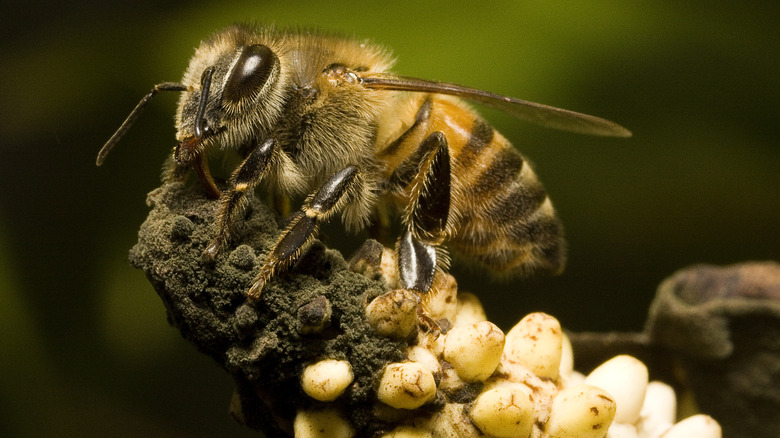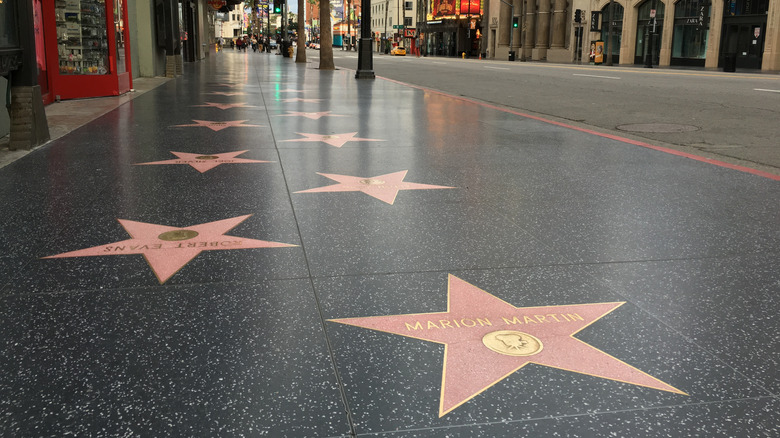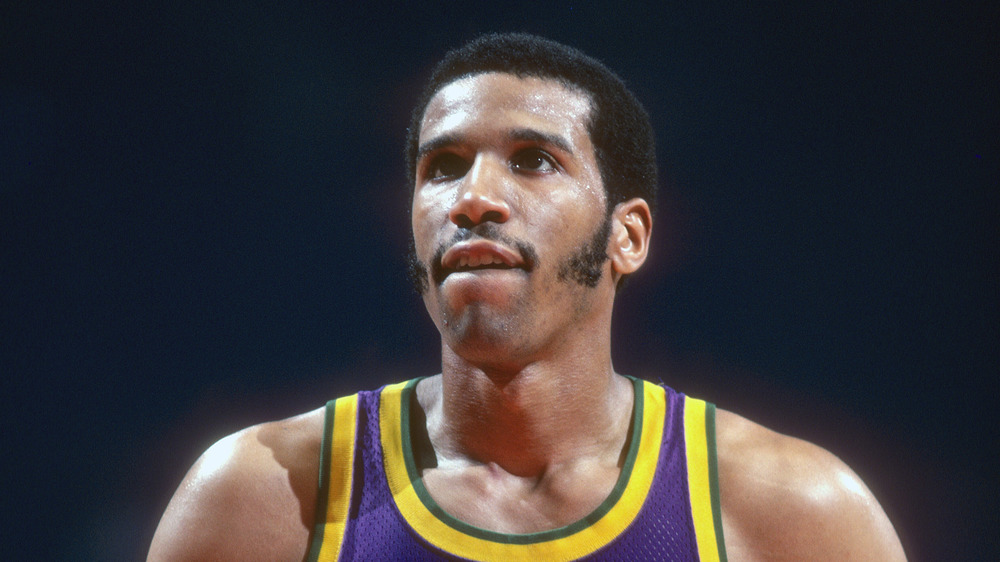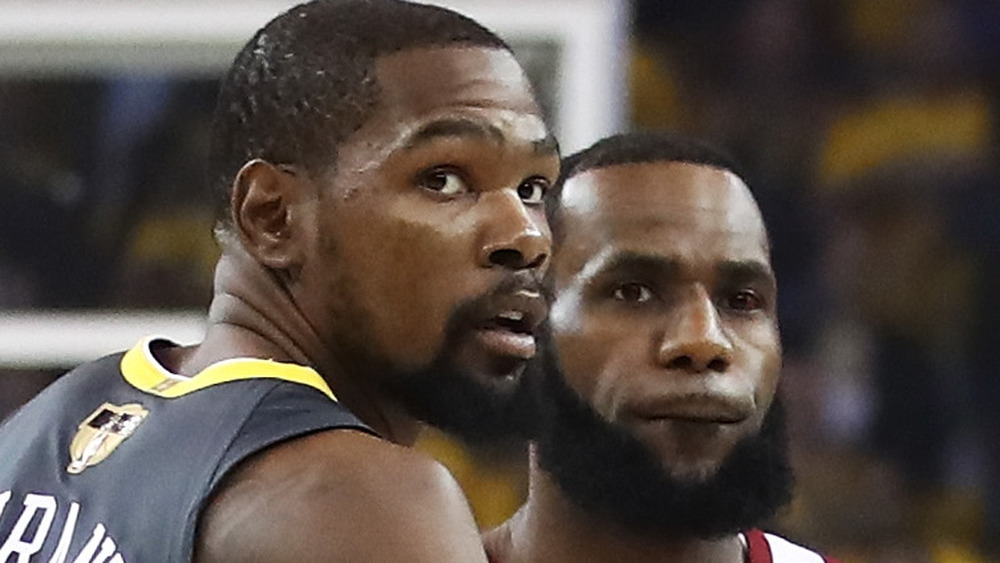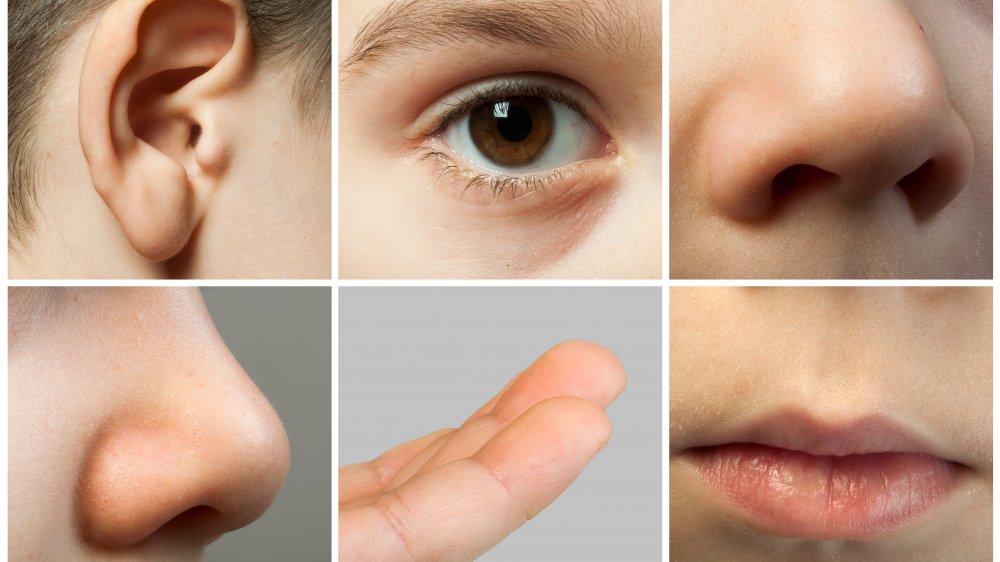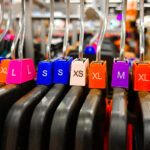
Fool Me Once Shame on You – Sneaky Ways Brands Have Misled Consumers Part 2
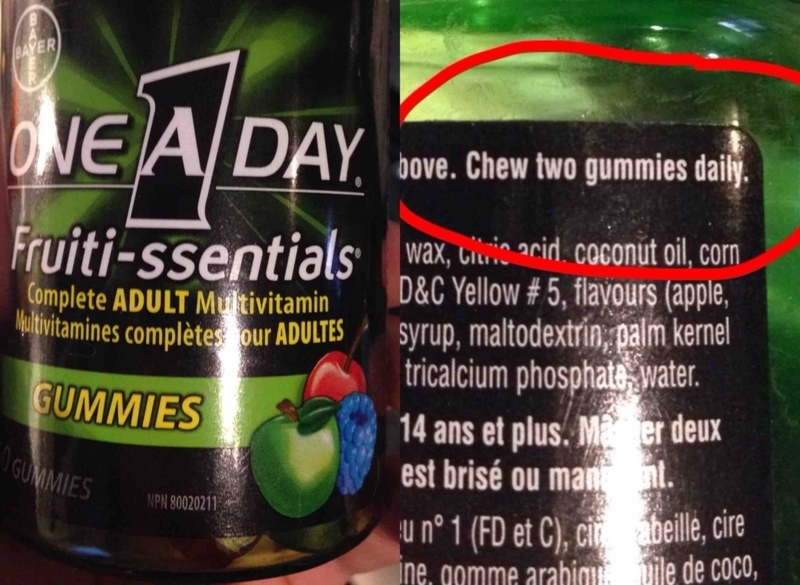
It’s certainly likely that you or someone you know have been on the wrong end of some crafty consumer branding. If our previous list was any indication of just how common this is, prepare to brace yourself for more even sneaky ways in which brands have misled their consumers.
Guess We Will Never Know
This pen has a pitch-black inkwell inside, so this way – it basically looks full all the time. But the dilemma with this is, customers will never know how much was in it, to begin with.
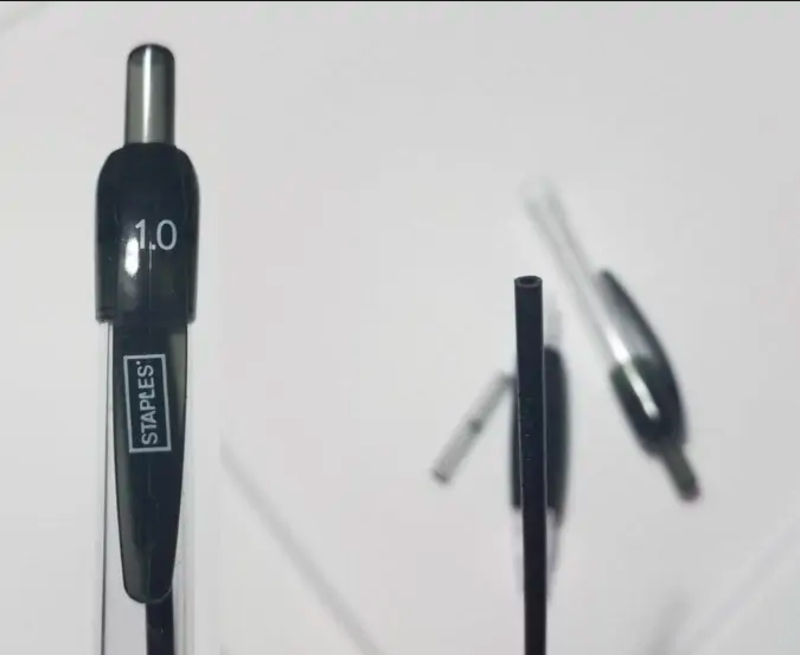
If we’ve seen anything from this list, we reckon these Staples pens are only half-full of ink. The worst part is, you can only tell once you’ve bought the pen that the inkwell is black!
When Brands Shamelessly Lied
Reading a label that says “Enriched with vitamin A” makes shoppers feel like they might be buying something at least marginally healthy. The least you deserve is to get what you think you’re paying for, right?
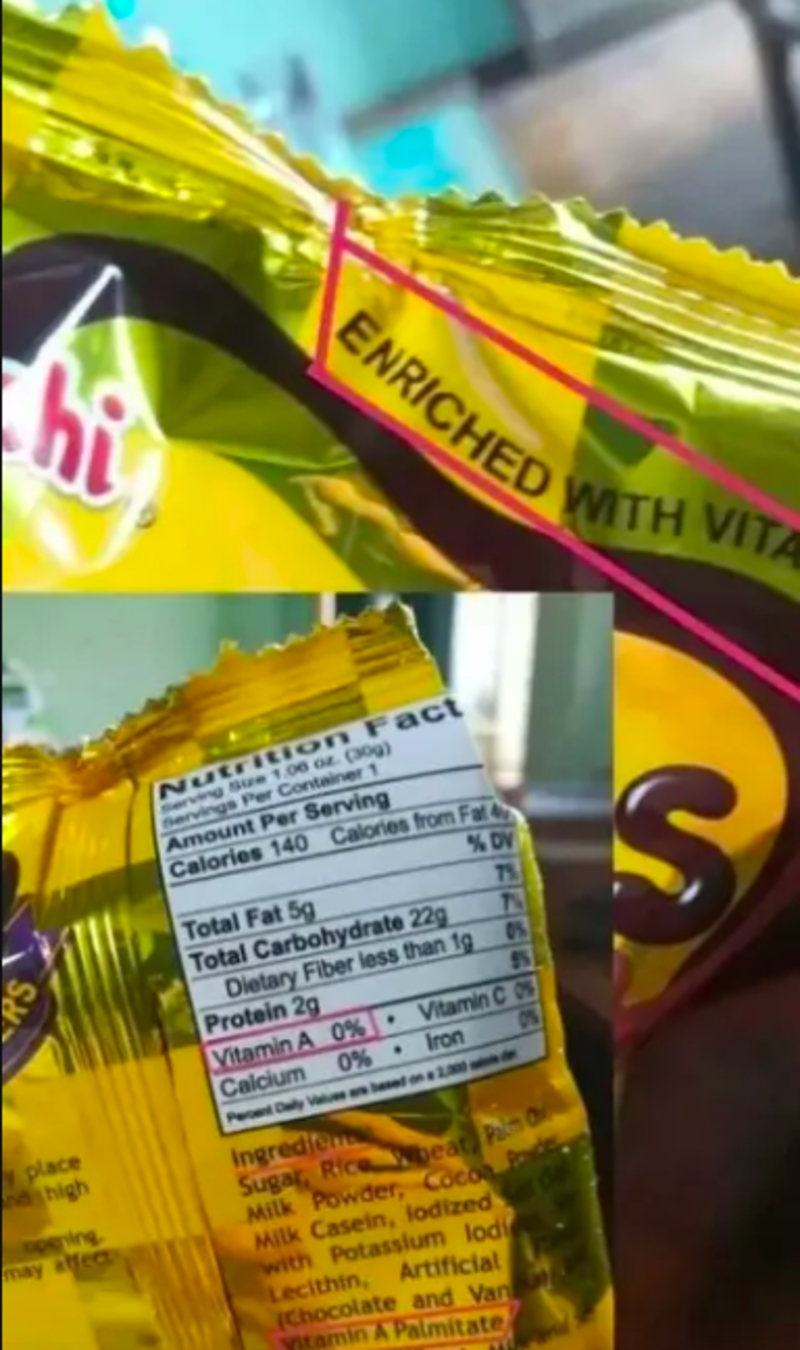
But it turns out it’s a complete fib — all one has to do is look at the nutrition facts to see that it’s a total sham.
When Approximately 40 Actually Means 28
Apparently having the word ‘approximately’ means that brands can say whatever they want without any consequences. So this is another sneaky way of making consumers think they know what they can expect.
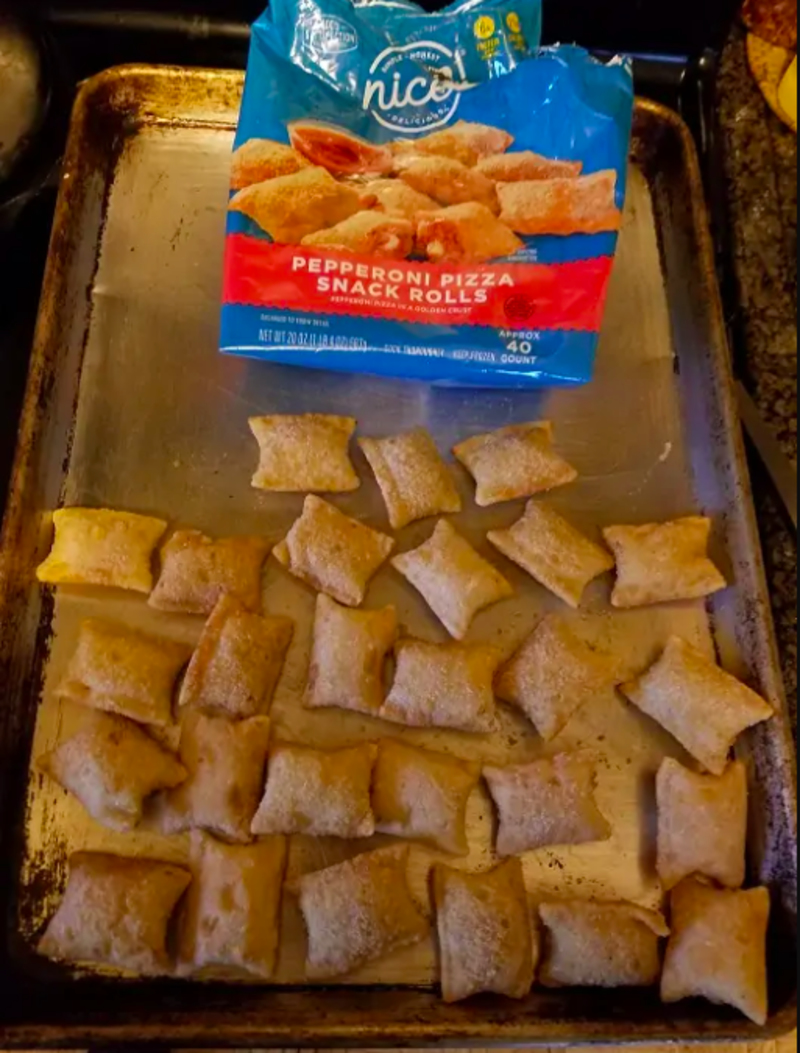
“Approximately 40″ could be any number, really. After all, 100 is pretty close to 40 on a scale of one to one thousand.
Diet Scams
We’ve all seen those fishy ads that read “Need to lose weight this summer?” “Reduce your body fat and build lean muscle without any exercise.”

This deceptive scheme lures consumers with the promise of a miracle in the form of a pill that will never work. These products, for the most part, aren’t approved by the FDA and are dangerous at worst and useless at best.
The Trojan Horse Email
This type of email is the black death of scams. It begins with a chain letter, joke, e-card, or personal email being sent from an anonymous address.

When the email is opened, a secret “backdoor” can give a hacker access to your computer. Let’s just say, the scammer isn’t going to use this information for fun. Beware of the Mariah Carey CD that will be bought with your credit card.
When Optional is Not an Option
This form will not allow you to request a quote unless you give them your phone number, which they falsely claim is optional. So, now, you know they’ll be calling you incessantly.
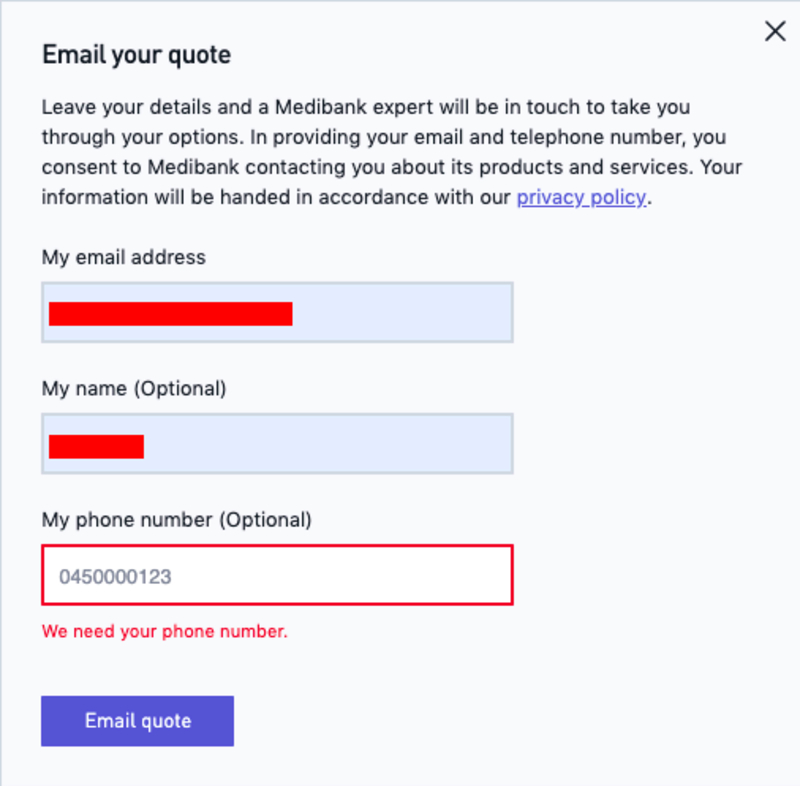
Scams like this can take the form of a bogus Facebook page or online retailer website. Don’t do it, people: IT’S A TRAP.
Loyalty Programs
Far from an attempt at rewarding their regular customers, loyalty programs are all about reinforcing their purchasing behavior.
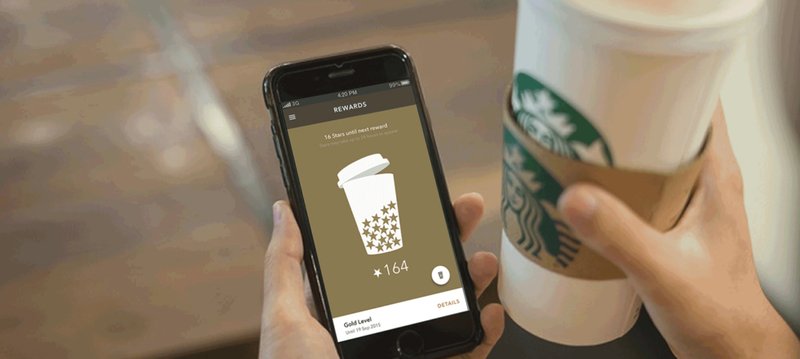
Shoppers who buy more — exactly what the retailers want, of course — are rewarded with a discount or some kind of deal, and that reinforces their behavior that buying more gives them a reward. So the cycle repeats itself, lining the retailer’s pockets even more as shoppers pursue their next reward.
Vanity Sizes
Is a size eight really an eight? Or is it closer to a 10, or even a 12? Many clothing brands have been putting smaller-size labels on larger-cut clothes for a while now, and while it can make figuring out what size you really are a headache in any given store, the practice shows little sign of slowing.
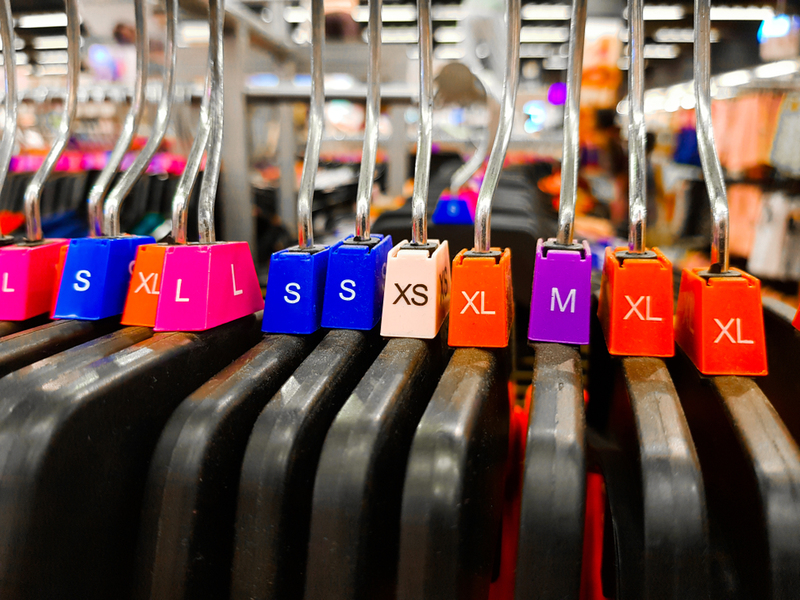
To put it simply, fitting into a smaller size makes shoppers feel good, and shoppers who feel good are more likely to buy.
Deals with Multiples?
Supermarkets love to show off their deals like “10 for $10” or “3 for $6.” The reason is quite apparent: Shoppers tend to buy more, sometimes a lot more, than they need to maximize on this “deal.”
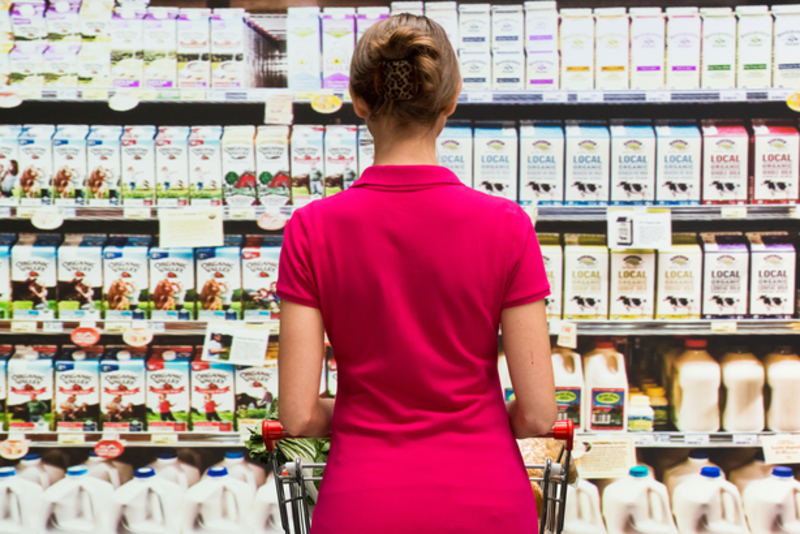
This often holds true even when the store doesn’t require shoppers to buy ten cartons of yogurt, for example, to get them for $1 each — simply because of the power of suggestion.
Decoy Prices
Many people would recoil when it comes to dishing out $50 for a T-shirt. But what if you were also shown a $25 T-shirt and a $100 T-shirt? Suddenly the $50 T-shirt doesn’t seem so pricey anymore — and if you want to balance price and quality, it seems entirely reasonable.
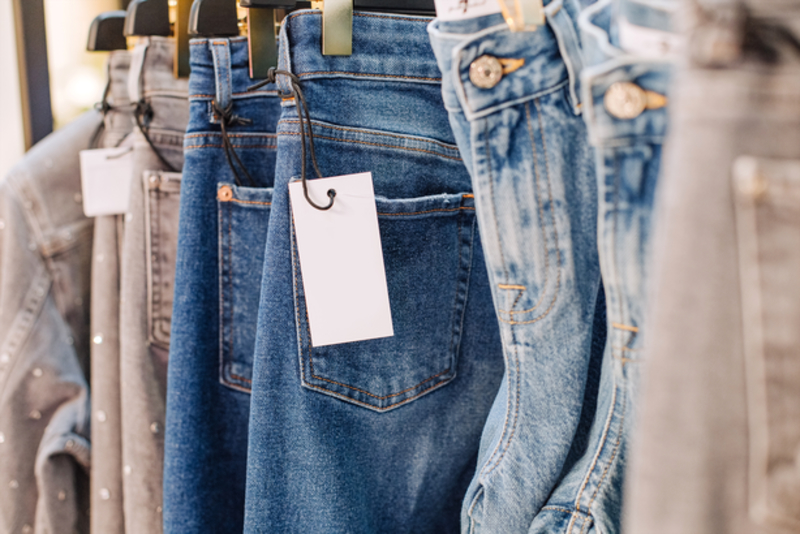
Chances are the retailer wants you to choose a certain one and will price one of the other options — the “decoy” — in an excessive way that will steer you back to the ‘more reasonable’ option.
That’s a Big Swing
If we do the math here, one Mb equals 1000k, so if their minimum speed is 256k, but it could vary by 1000 to 2000k. Technically, that means the speed could just be 0.
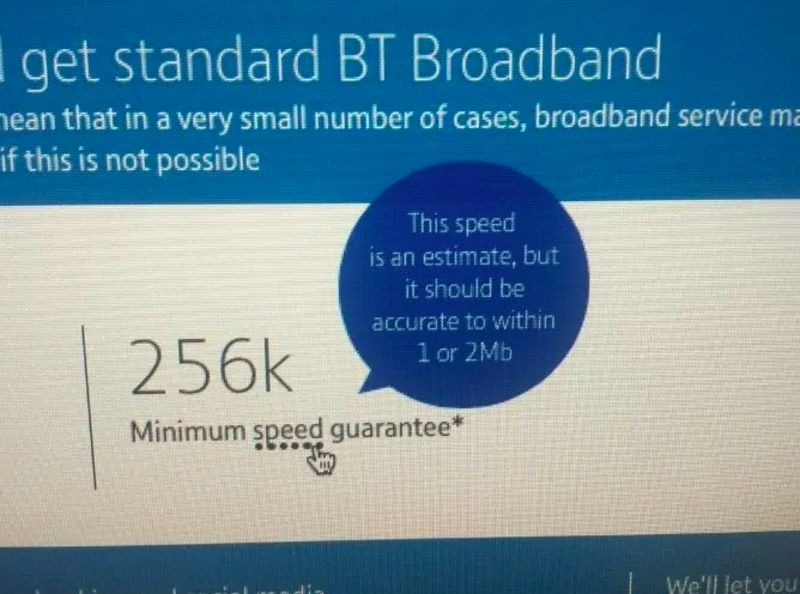
We don’t want to call this broadband provider out for being dishonest, but if it wasn’t for this asterisk, they should definitely be charged with intent to commit fraud with a misleading statement.
Strategic Store Layouts
Even the most faithful Ikea enthusiasts will reveal how hard it is to navigate the maze-like store. Want to sound smart? It’s called the “Gruen effect” — the simple idea behind this is that exposing you to more products will encourage you to purchase even more products.
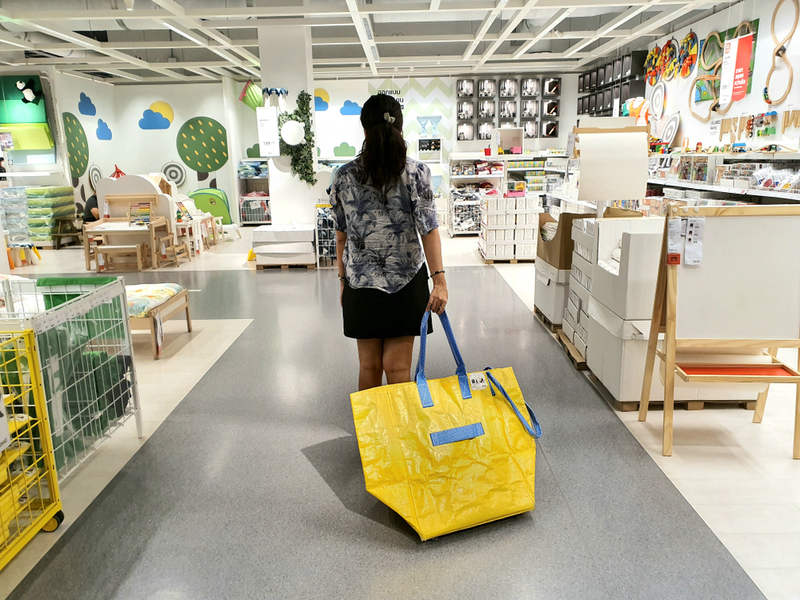
You can also see this in action at your local supermarket, where you’ll need to cross through as much of the store as possible to get that gallon of milk tucked away in the furthest back corner.
Social Proof
There’s a reason that brand you’ve never heard of is broadcasting all its five-star reviews in a gush of Facebook ads. You’ll probably be a lot more interested in a product — and more inclined to buy, of course — if “everyone” is raving about it.
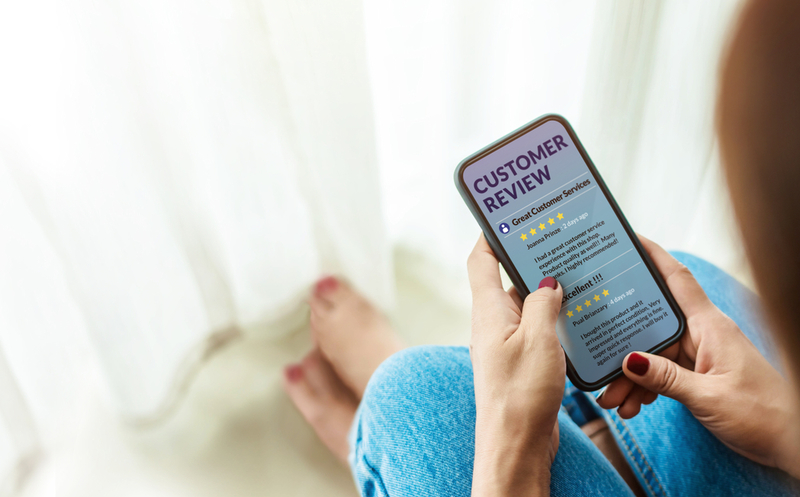
This simple concept, called “social proof” in marketing and it also applies to companies when they have expert testimonials or include sales numbers in their advertising.
Sneaky Upselling
“Would you like to add a special item for 99 cents?” If you’ve ever ordered at a fast-food chain, you’ve no doubt heard this casual attempt at upselling.
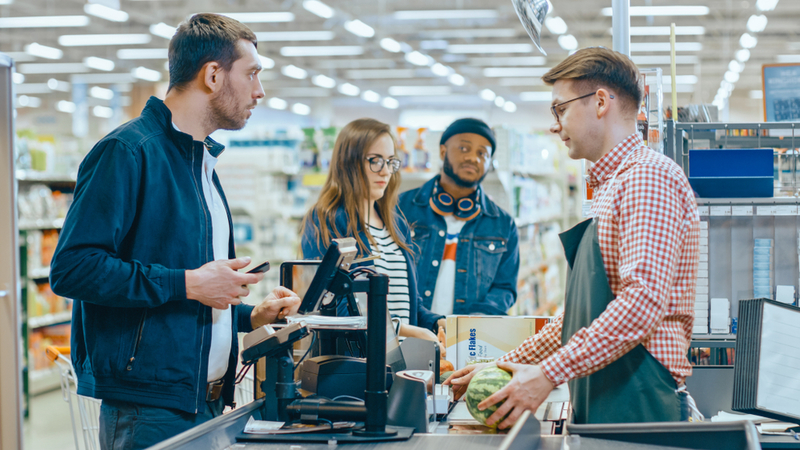
And if you’ve shopped online, you’ve certainly been shown items related to the product you’re checking out or bundles of related items sold for less than what they would cost if bought separately. So is this a deal? Only if you were planning to it to begin with.
Liberal Return Policies
Common sense would tell us that we return more purchases when retailers have liberal return policies on their products. This may be true — but retailers have also found that shoppers are more likely to buy in the first place when these flexible policies are in place.
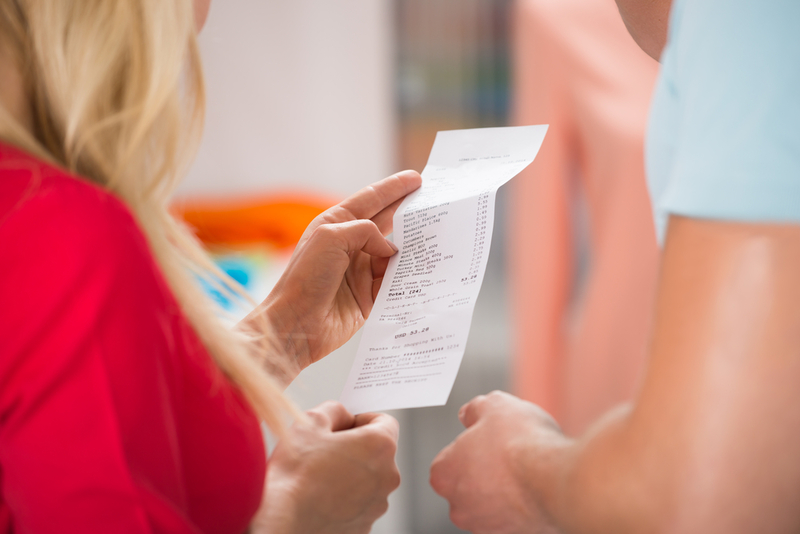
Interestingly, longer return windows also mean there are fewer returns, probably because shoppers feel less urgency to decide whether to return their purchases and can even forget.
Not Exactly
A prospective student’s interest might be piqued when they come across this sign, thinking that they can finally get that university degree or diploma they wanted.

But if we look closely, we can see that they’ve sneakily added the word “equivalent” in-between “University” and “Degrees.”
Good Ol’ Nostalgia
Retro movie posters and old-fashioned video games have been a hot holiday gift for a few years now, and to retail experts, that’s no surprise.

It turns out that fond memories make shoppers happy — and that burst of emotion is far more likely to make you buy something. Next time a company churns out some throwback product, enjoy the reminiscing, but consider keeping your wallet closed.
Blending The Exit Button With The Background
In another lousy attempt at getting people to subscribe to their services this ad suggests you have to pay some sort of subscription to continue.

Most users probably won’t see the white ‘X’ hidden in the top right corner of the ad to exit the screen, leaving you no choice but to click ‘continue.’
Supersized Carts
It would seem that supermarket shoppers don’t like pushing around empty carts — it could be that it just feels like something is missing. Top marketing specialists say a cart that’s double the size can lead customers to buy 40% more on average than they planned to in the first place.
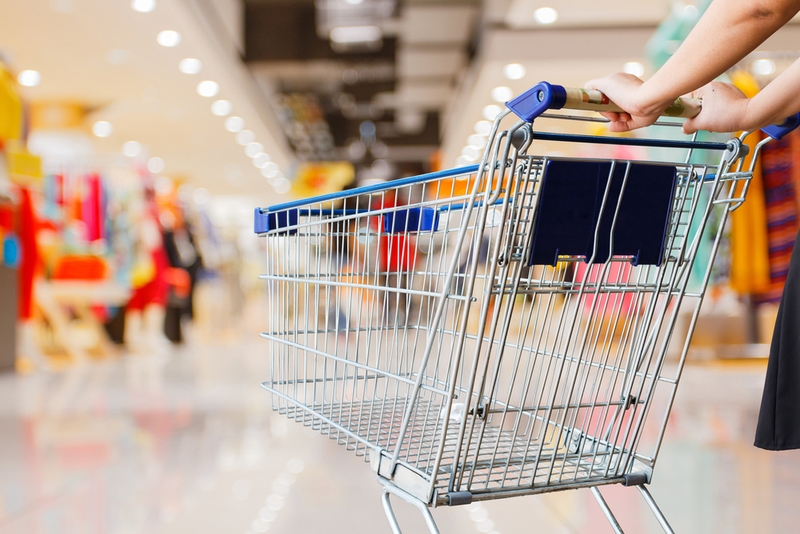
So while none of us like to run out of room, next time we head to the store, we should consider opting for a basket or a smaller cart to avoid supermarket overspending.
Hiding the Download Button
This isn’t clever at all, it’s just incredibly annoying. To get the right button, you need to click on a host of fakes. Clicking the wrong one means opening a pop-up ad.
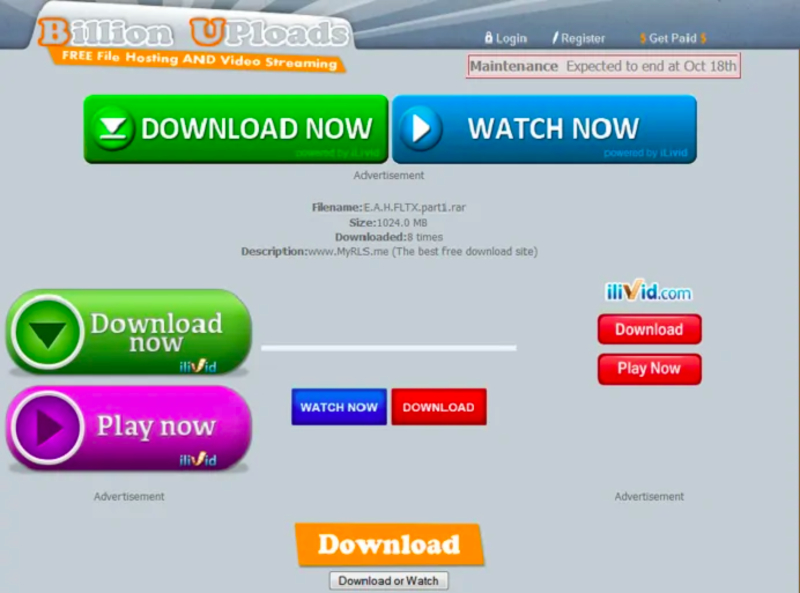
We sure are getting tired of this kind of trickery and it does a good job of making us lose interest rather quickly.
Subscription Services
There’s another reason besides convenience that subscription boxes and similar services suddenly seem so prevalent. Basically the hassle of canceling a subscription, even one that we don’t often use — keeps companies’ pockets full.
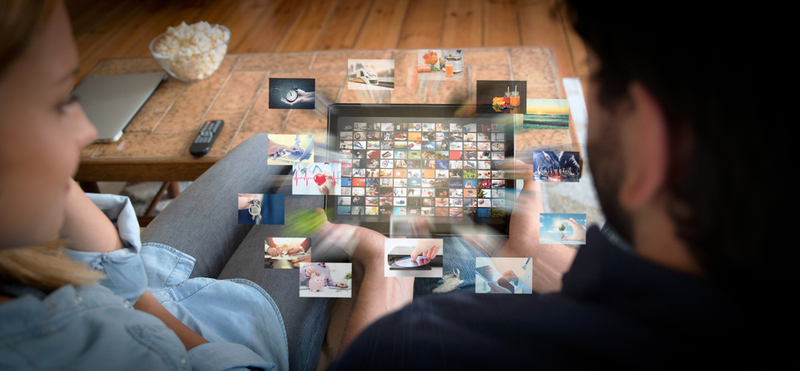
It’s true even though we’re also unlikely to consume enough of something to justify the fixed price, and researchers find we would be better off giving in to the occasional splurge than signing up for a flat rate — even if it might seem like a great value.
When Using the Kettle Wasn’t Free
When you check into a hotel, you might have a kettle in your room, which you would assume is for free use. But if you read through the binder, you’ll actually find there’s a fine for using the kettle, and only if reach the end of the binder.
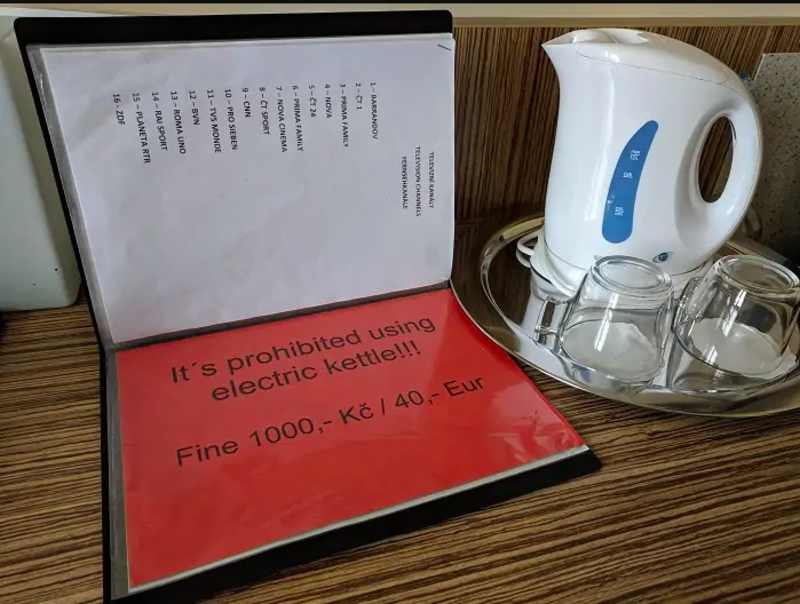
Basically, this is one example of how hotels scam their customers, they do the same with the mini-fridge.
Charm Pricing
This one is for anyone who ever wondered why that jar of peanut butter isn’t $5 instead of $4.99. In a strategy called “charm pricing,” marketing researchers have found that we’re more likely to think we’re getting a deal at $4.99 because we associate the price more closely with $4 instead of $5.
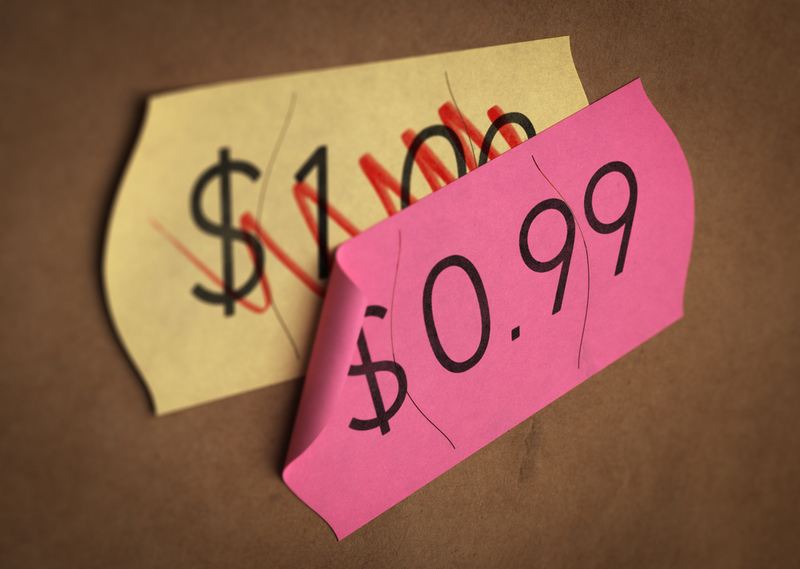
On the flip side, there is “prestige pricing,” high-end retailers are better off using rounded prices shoppers are more likely to associate with quality and luxury.
Resizing
Dove came out with a brand new size for their range their men’s range body wash! It costs a few extra dollars, but it might be worth those few extra dollars, right? Wait a minute!
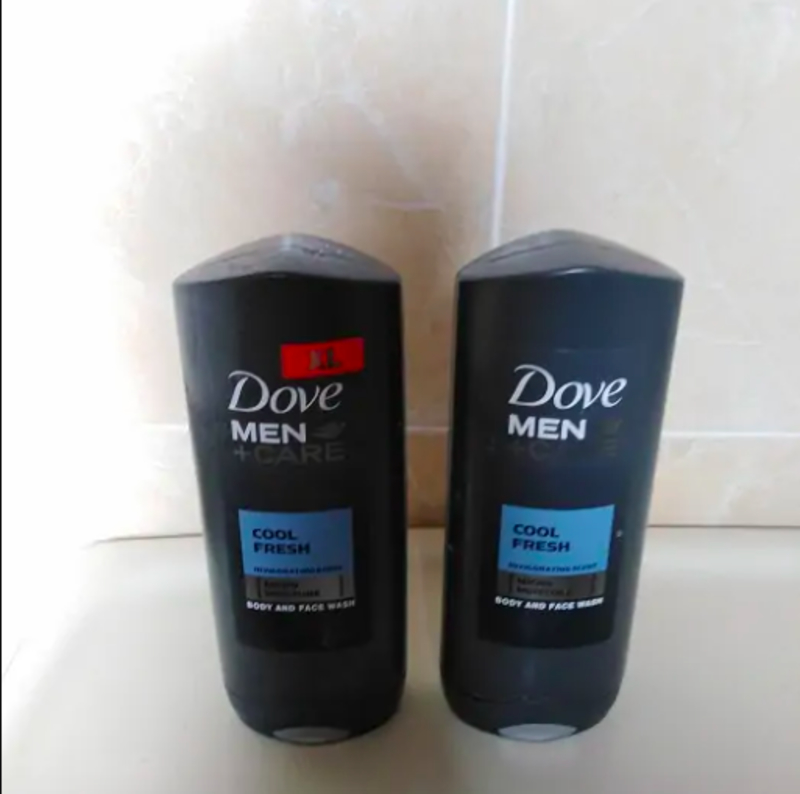
Nice try, Dove, those red letters indicating the “XL” size doesn’t mean much when we compare the two bottles next to each other.
One-Click Ordering
Being able to order everything from clothing to groceries with just one click is all about making shopping convenient, right? Sure, but it comes with a considerable upside for retailers such as Amazon.

One-click ordering makes us much less likely to abandon those virtual carts, meaning we spend more than we otherwise might if we had to click a few more times or manually enter payment information.
Not Very Eco-Friendly
Well, this looks like a shameless lie. Why put “biodegradable” on a plastic package that is obviously not very eco-friendly? Because nowadays people make an effort to buy earth-friendly products.
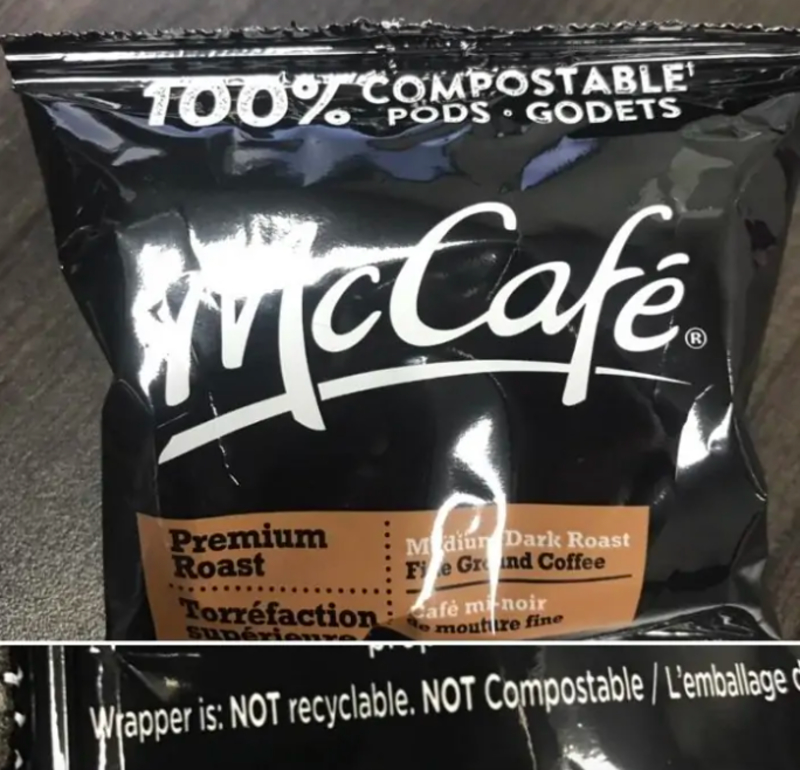
It doesn’t matter if their packaging is really biodegradable or not. It’s using whatever means possible to get the product off the shelf.
Dollar Signs
It might seem sleeker when high-end restaurants omit dollar signs on their menu or for that little boutique not to include them on their price tags.
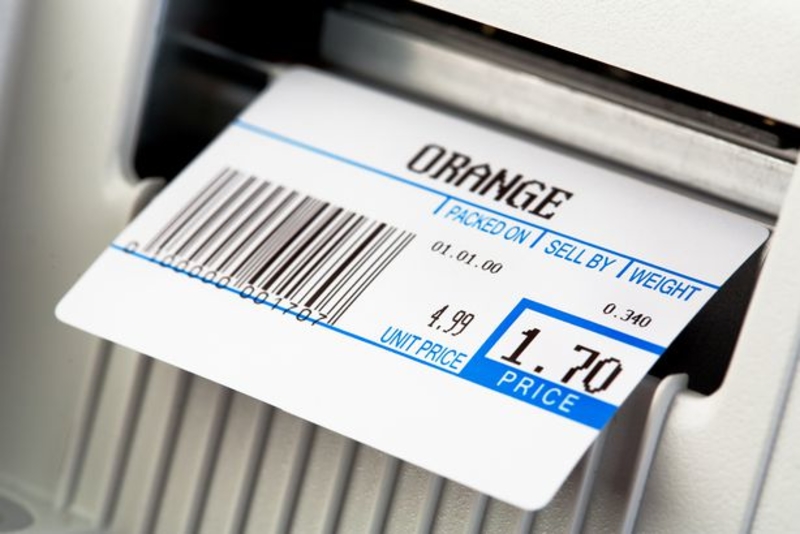
But there’s something more at play: Marketing researchers speculate that we’re more likely to spend extra when we don’t see the dollar signs, likely because it helps reduce the psychological “pain of paying.”
Easter Bunny
This old trick makes us think we’re getting a significant portion of chocolate—but shame on the manufacturers for their sneaky ways.
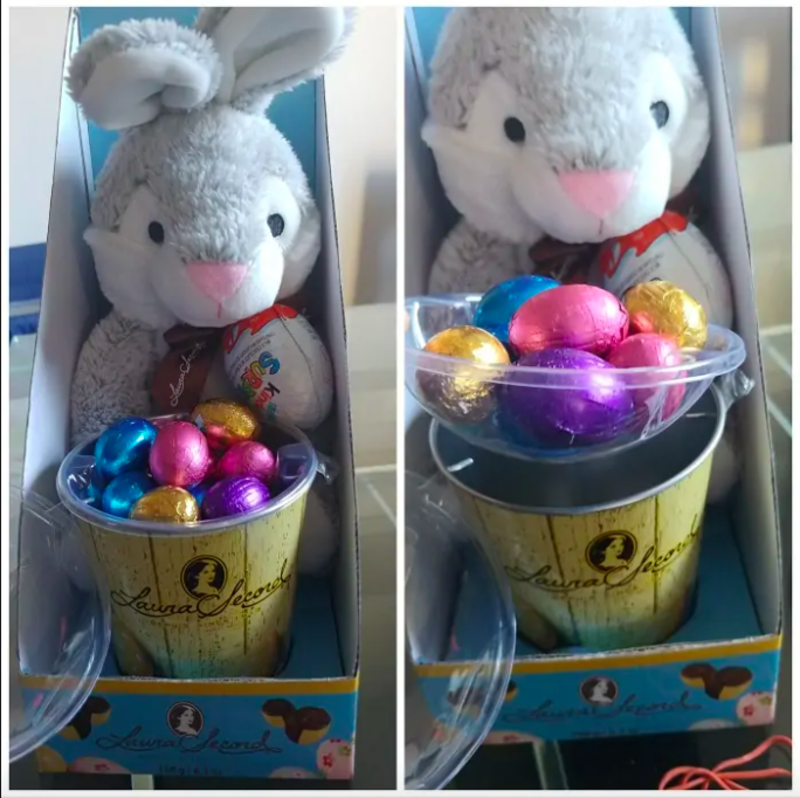
You probably just ruined someone’s childhood with your meager portions. The child that gets this will remember the Easter Bunny as a big phony and a liar.
TriAdalean
This may seem like a harmless sticker. Guess again, it’s anything but! This “sticker” is actually a part of this TriAdalean bottle. This diet pill company decided to strategically place stick a seemingly fake “review” of their product on the health warning.
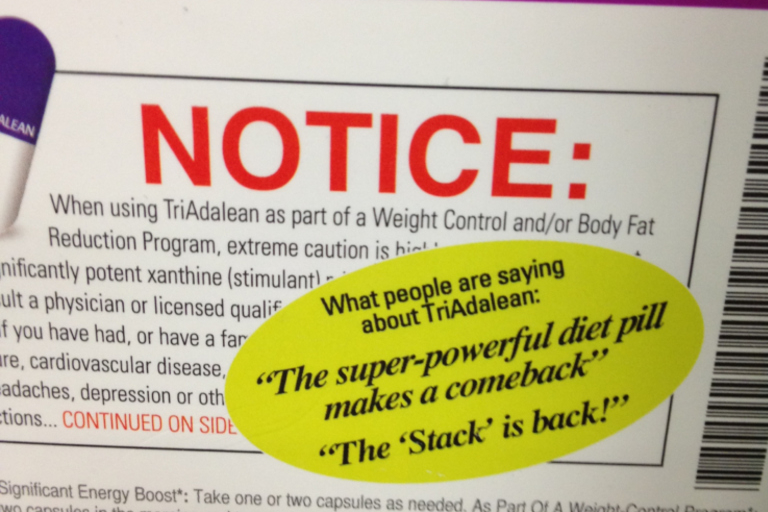
Because honestly, who needs health warnings? They’re probably not saying anything too important, anyway.
One A Day
Well, well, well, what do we have here? When your product is literally called One a Day, but the recommended dose is two gummies, you may want to reconsider the serving size. This is one of the moments that has us shaking our heads, saying, “you only had one job!”

We can’t help but wonder if consumers actually paid attention to the fact that they were supposed to take two supplements rather than one.
Panda Lollipop
This lollipop is taking veganism to a whole new level. Not only is it unacceptable to eat animals, but the thought of eating an animal-shaped lollipop is just beyond comprehension.
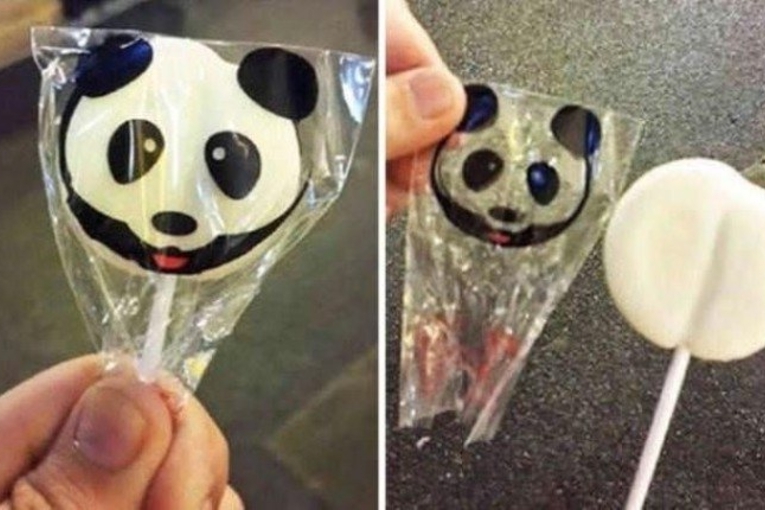
We get that eating a panda bear may be a little wrong, but what about a lollipop? All we wanted was a beary-flavored lollipop!
Strawberry Candy
This is the exact reason we have trust issues. If you can’t trust strawberry candy, what else is left? This type of candy is the kind we’d never buy for ourselves but are so extremely excited to receive.
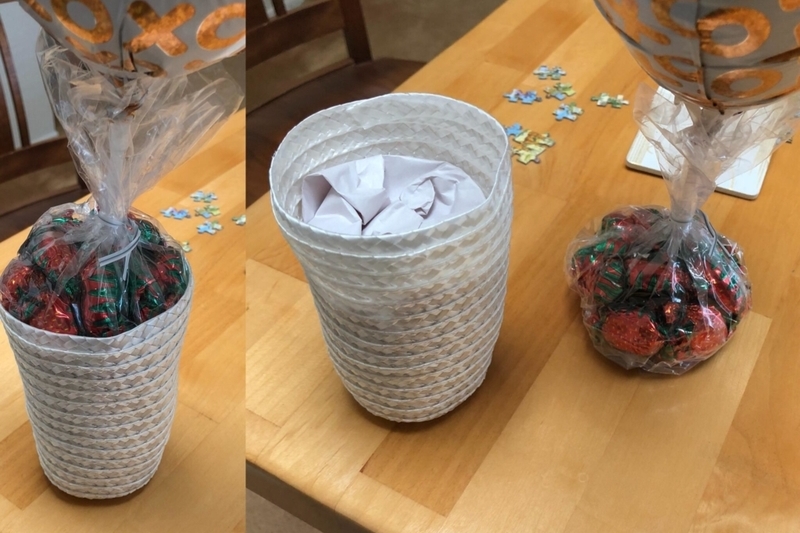
That’s why this “cup” of candy is absolutely disappointing to us. The least you could do is fill the bag up a little more!
Rope
Once again, this list proves that advertisers use all sorts of ways to trick us, the consumers, into buying what they’re offering. This time, it’s no laughing matter. When you advertise rope – using a climber in the packaging – you should expect climbers to buy the product.
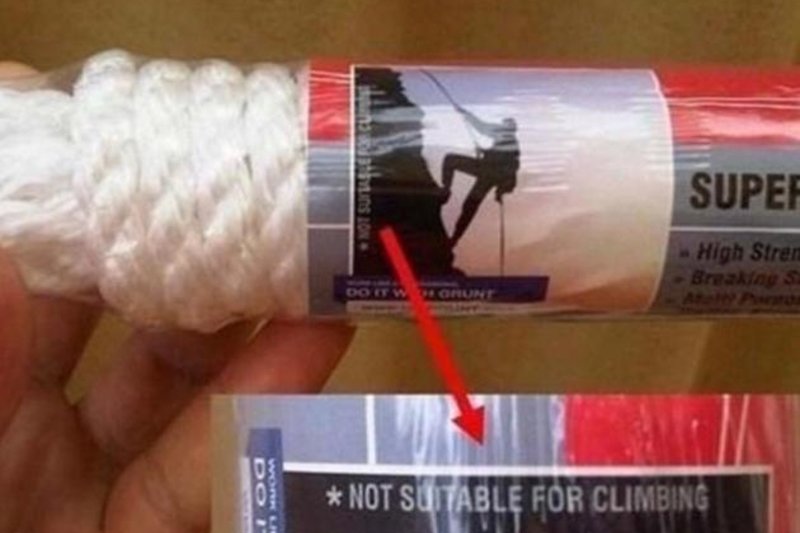
This is why this makes it all the more dangerous that this is not climbing rope. We’re left with one question. Of all the things to do with rope, why advertise the one thing you cannot use this rope for?
Jimmy Dean
Growing up, going to carnivals was our favorite thing to do. Not because of the rides or the prizes, but because of the corn dogs. How excited we were to find them in a store, bringing the thrill of the carnival home with us. That was until we opened the box.
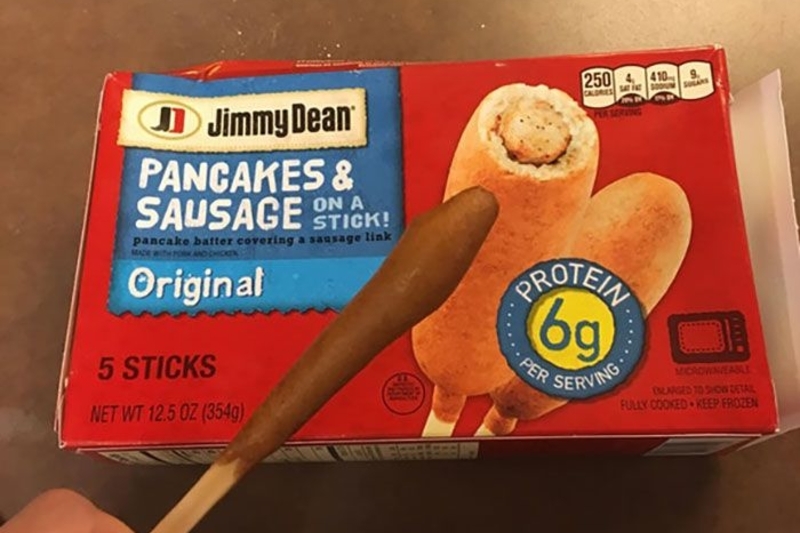
Something is missing here. Is it the pancake or the sausage? To us, it seems like both. When Jimmy Dean advertised five sticks, what they meant was five sticks. Nothing else.
Smiley Balloon
The greater the expectation, the greater the disappointment. This has got to be some sort of practical joke, don’t you agree? Who doesn’t want a balloon in the shape of a smiley face? We know we do.
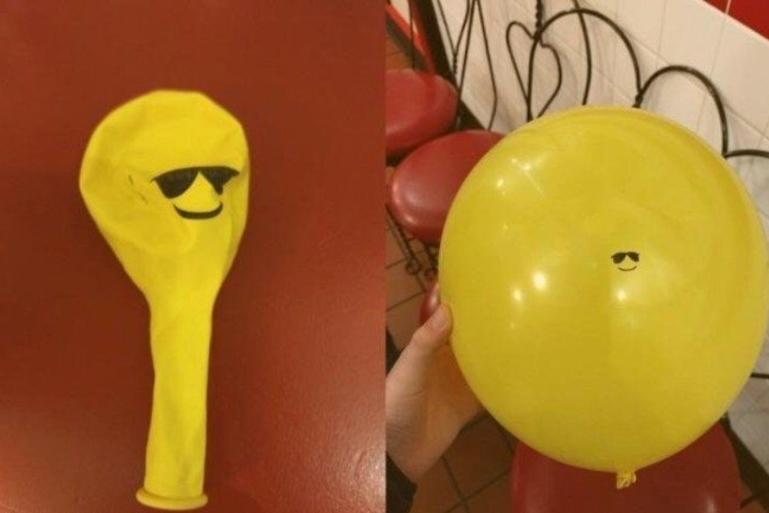
Just imagine throwing an Emoji themed birthday, finding these perfect balloons, and blowing them up in anticipation, and then seeing this…
Kellogg’s Eggo Waffles
Some parents use foods kids love to trick them into eating fruits and veggies. Well, Kellogg’s one-upped parents in the biggest ruse of them all, advertise blueberry waffles, but then only put ONE blueberry in them.
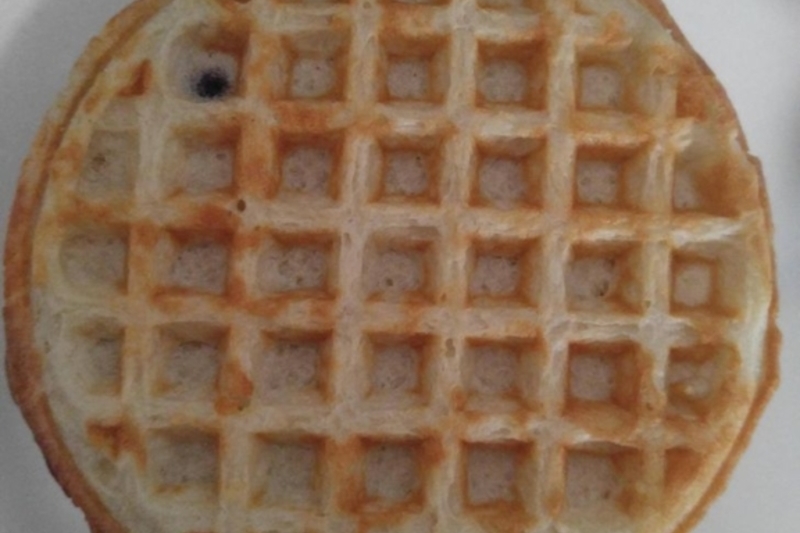
This is a sure way to have kids going crazy for these waffles, and their parents are too confused and angered to say no!
Abus Locks
The last time we checked, our vision was 20/20, and we weren’t color-blind. That being said, this explicitly says green lock, so why is it blue? Perhaps they meant that the locks are eco-friendly, which would be a sound explanation for what’s written.
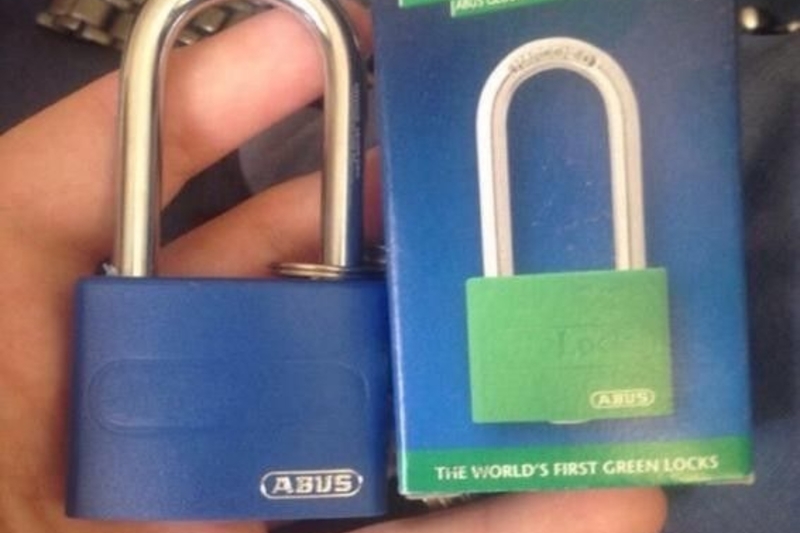
Even so, this still doesn’t explain why they decided on advertising a materially green lock. It adds both unnecessary confusion and disappointment when you’re anticipating finding a green lock.
Skimygloop
We never really liked googly eyes; they always had a way of irking us out. Now we have all the more reason to dislike them. You’d expect the jar to have a substantial amount of googly eyes inside, wouldn’t you?
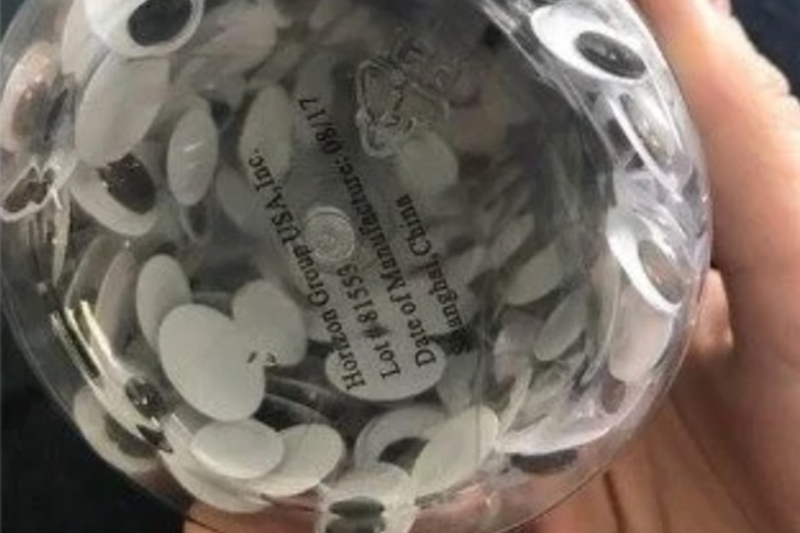
However, when you look at the bottom of this bottle, there’s a plastic tube right down the middle. This has us rolling our (googly) eyes!
Emergency Alert
When an ad is disguised as an emergency alert, we can’t help but be unimpressed with such a weak tactic. Getting people’s attention through tricks about an emergency exit is dangerous but also incredibly tacky.
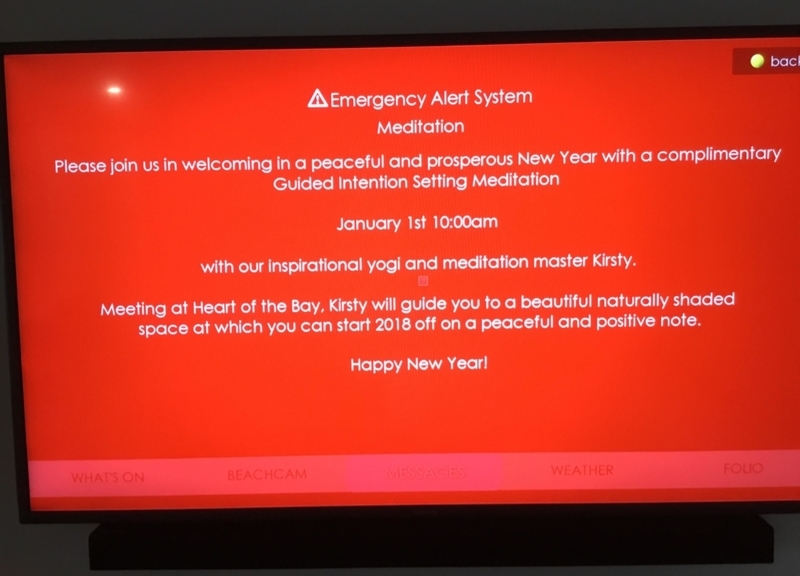
Using such a cheap trick is a great way to ensure that your consumers are cautious.
Doritos
When “more to share” really means “more plastic wasted,” we’re ticked off! Doritos thought of a clever way to sell more expensive bags of chips when really, you’re getting the same amount.
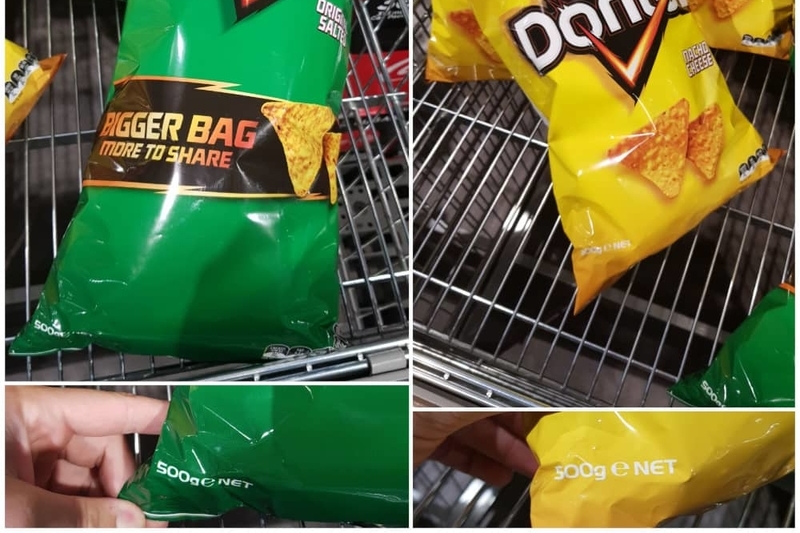
If there’s something our parents taught us, it’s always read the fine print, and let’s just say we’re happy we listened to them! The Doritos bags claims it’s a bigger bag, but reading the tiny text; you’ll notice it contains the same amount as the standard bag.
Spirit
Spam is annoying as is; we don’t need Spirit giving us a heart attack too! Opening up this e-mail, we might have a mini heart-attack. Miss, our flight? Never!
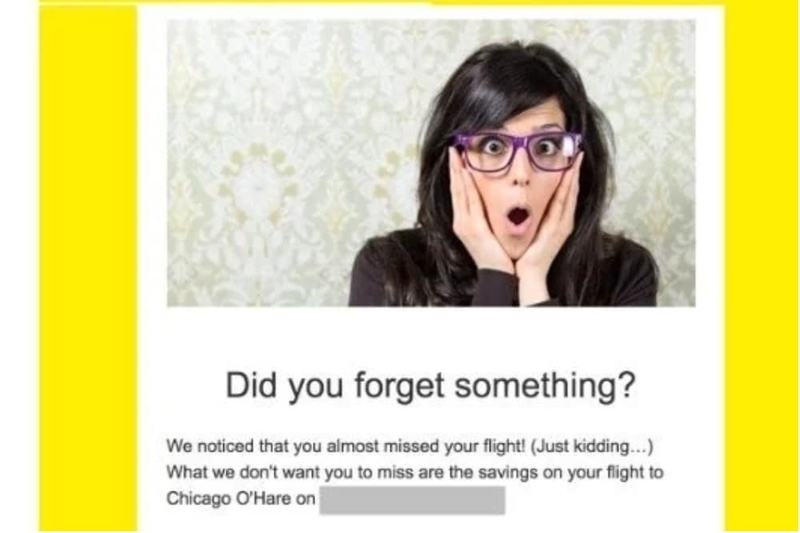
Now that we’ve got that settled, we can breathe deep and let the anger wash away, knowing sooner rather than later, we’ll be on vacation. A vacation we wouldn’t miss for the world. Take that, Spirit!
Shrimp
If you’ve gotten this far in the article, this one will definitely not surprise you. At first, we laughed. But then, we became upset. Yes, we will admit these shrimp look questionably long, but this kind of deception still troubles us.
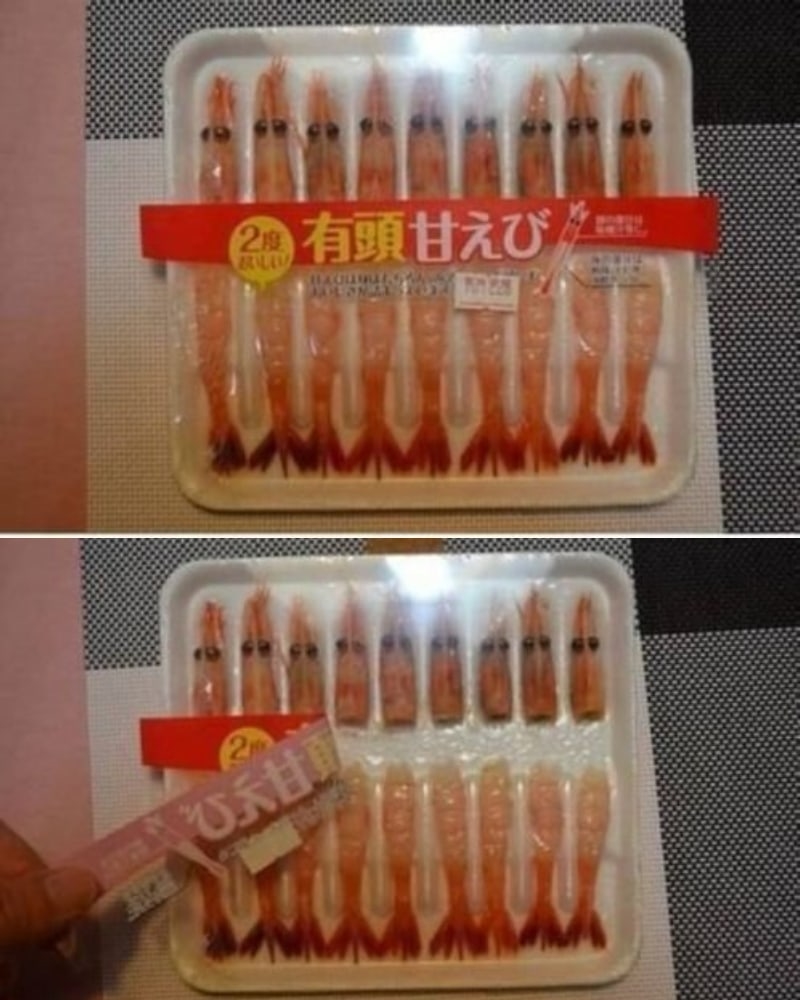
What can you do with shrimp heads anyway? If anyone has any shrimp head recipes, please, send them our way!
Pop-Tarts
The first time we ever bit into a pop-tart, our world was forever rocked. The pastry filled with a delicious filling only Pop-Tarts knew how to create, and don’t get us started on that sweet frosting!
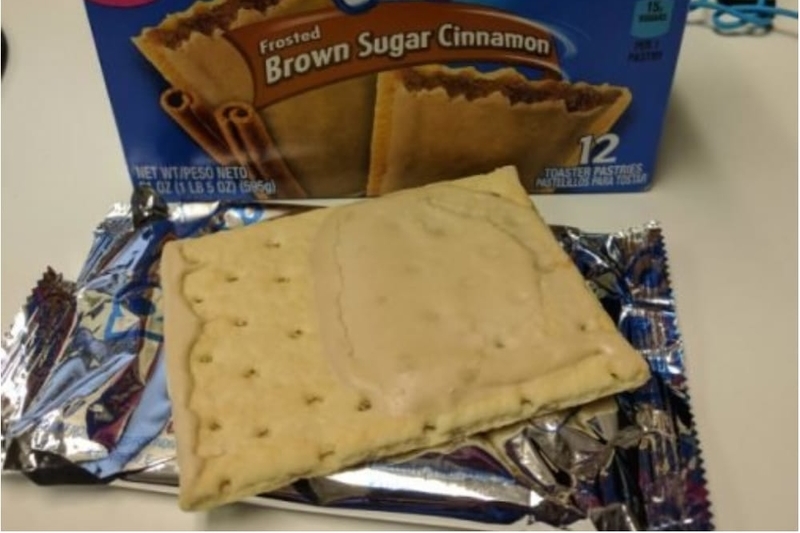
Our nostalgia has got us craving Pop-Tarts…just not the one in this photo. What happened here? Why did Pop-Tarts think it was okay to slack on the frosting? We need answers!
Essence
Is it ever too early to learn that the real world will only disappoint you? Well, if you want to get a kick start at teaching your kids, these Essence nail stickers are exactly what you need.
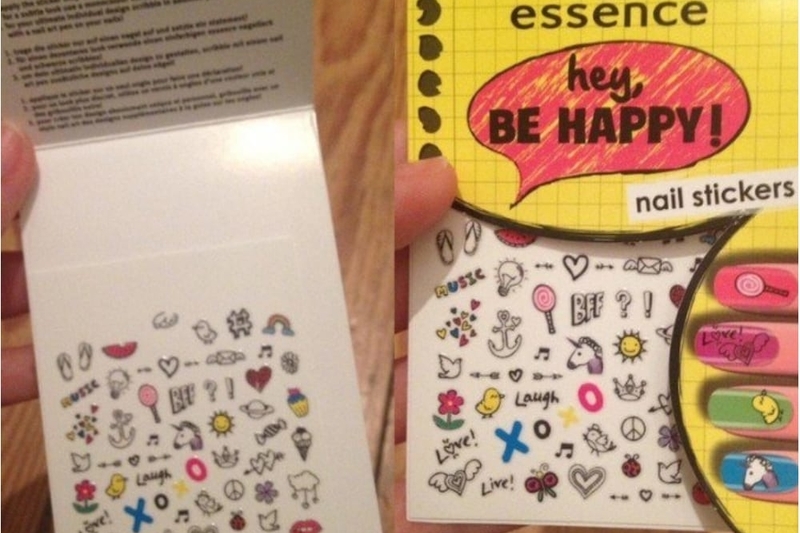
How is one supposed to “be happy” when only one-third of this whole packaging is full? Perhaps kids (more than us) will understand that nothing comes before profit and that this was a completely reasonable marketing move.
Listerine
Why would Listerine ever think to wrap their packs in another pack if they weren’t packing two packs together? The answer? Apparently, the breath strips are very breakable, and they need extra protection. Other than the fact they tricked us into thinking there were at least two packs of Listerine strips in this packing, it’s just plain wasteful.
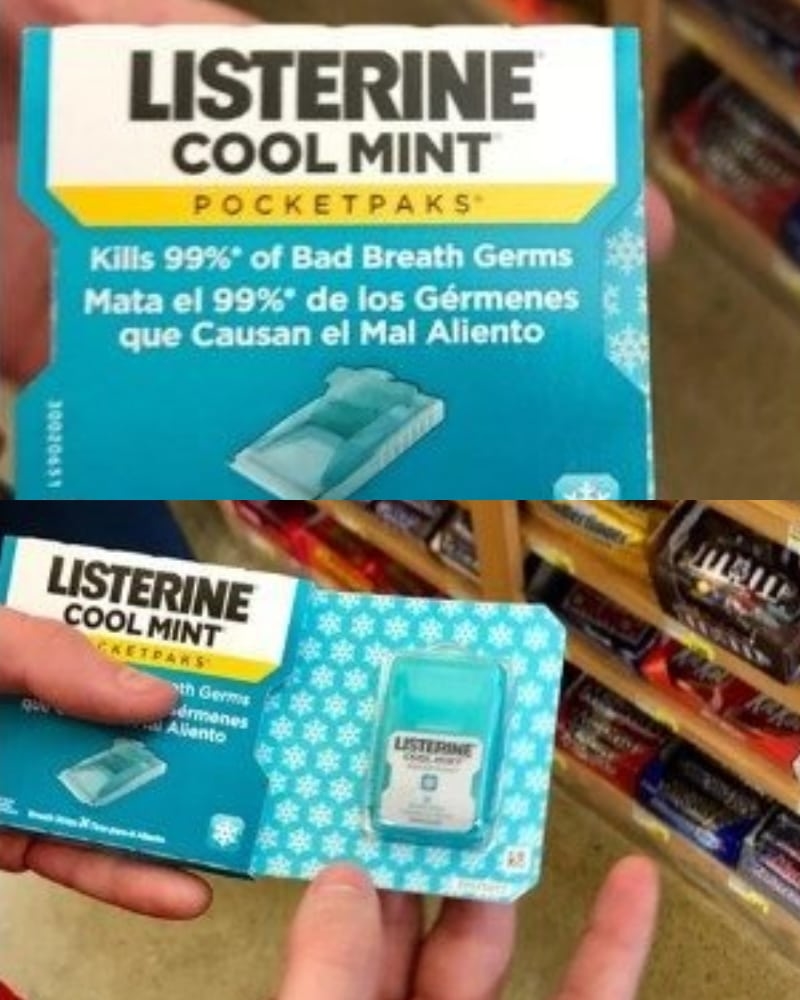
They definitely could have designed a smaller package, but then again, why would being straightforward with their customers appeal to them?
Store-Bought Cookies
Who stole the cookie from the cookie jar? Apparently, no one; there was only one cookie in the package. There has to be a reasonable explanation of why this cookie company produced containers that fit one cookie.
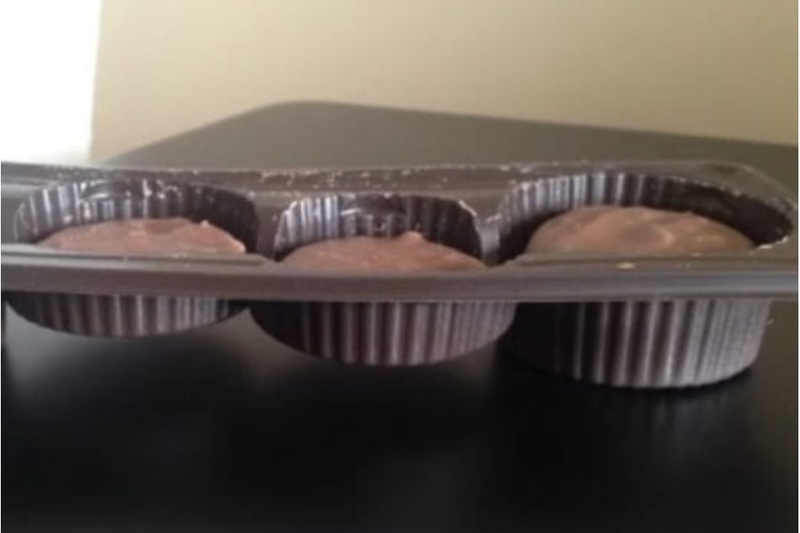
We feel bad for whoever bought these cookies; even if the weight on the packaging is correct, it’s still very disappointing to see that companies trick their buyers like this.
KFC
Scandals may come and go, but the love for fast food stays forever. In 2013, a video of an employee showcasing mac-and-cheese and green beans went viral. “Why,” you may be asking yourselves? Well, according to him, they had been there “three of four days.”
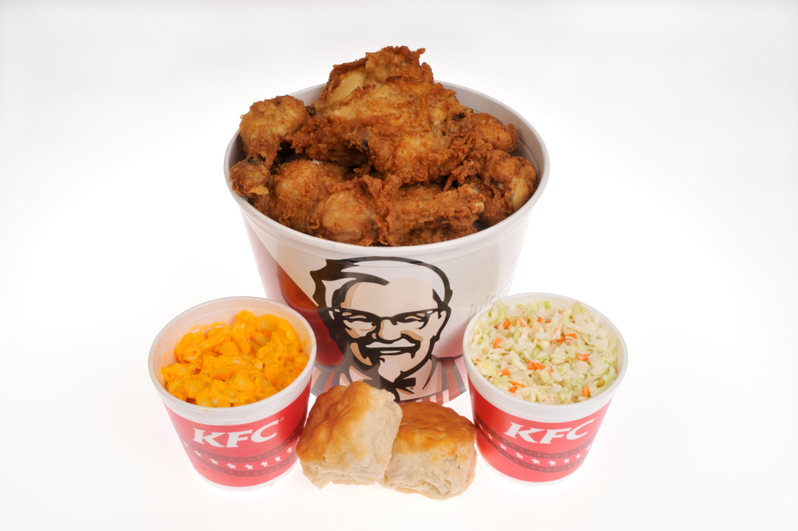
Not only that, but the employee repackaged the food to be served the following day! The video surfaced again in 2017, and KFC stated that their policies and practices had been improved since the filming.
Starbucks
Consumers have been complaining about the company practices of Starbucks for years; people have even gotten the law involved! Here’s something to notice next time you order an iced drink at the world’s most famous coffee shop. Ice!
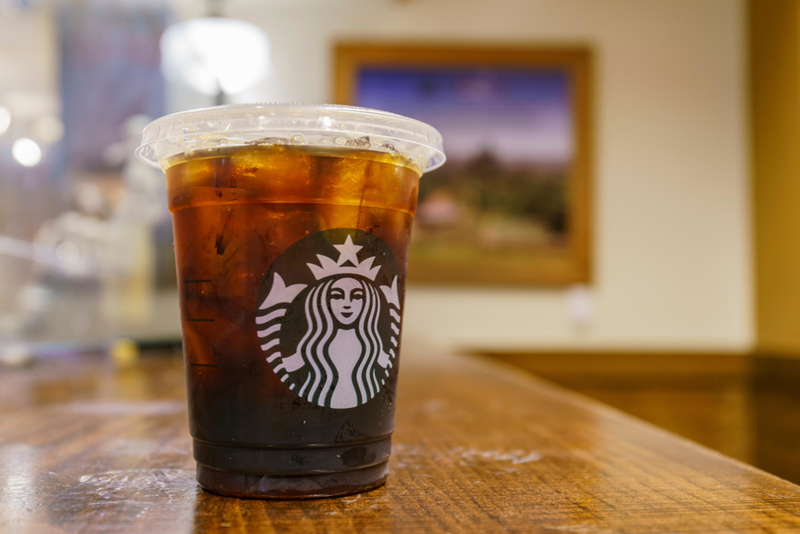
Starbucks loads their drinks with ice, which leaves you with two sips best. Your best bet around this scam is to order the drink with no ice and ask for a cup of ice on the side to add yourself! Take that, Starbucks!
Honey Nut Cheerios
Even the beloved Honey Nut Cheerios aren’t exempt from lying to their buyers. As we’ve seen up until now, many manufacturers continually decrease the volume and weight of their product, only to market it as a larger package!
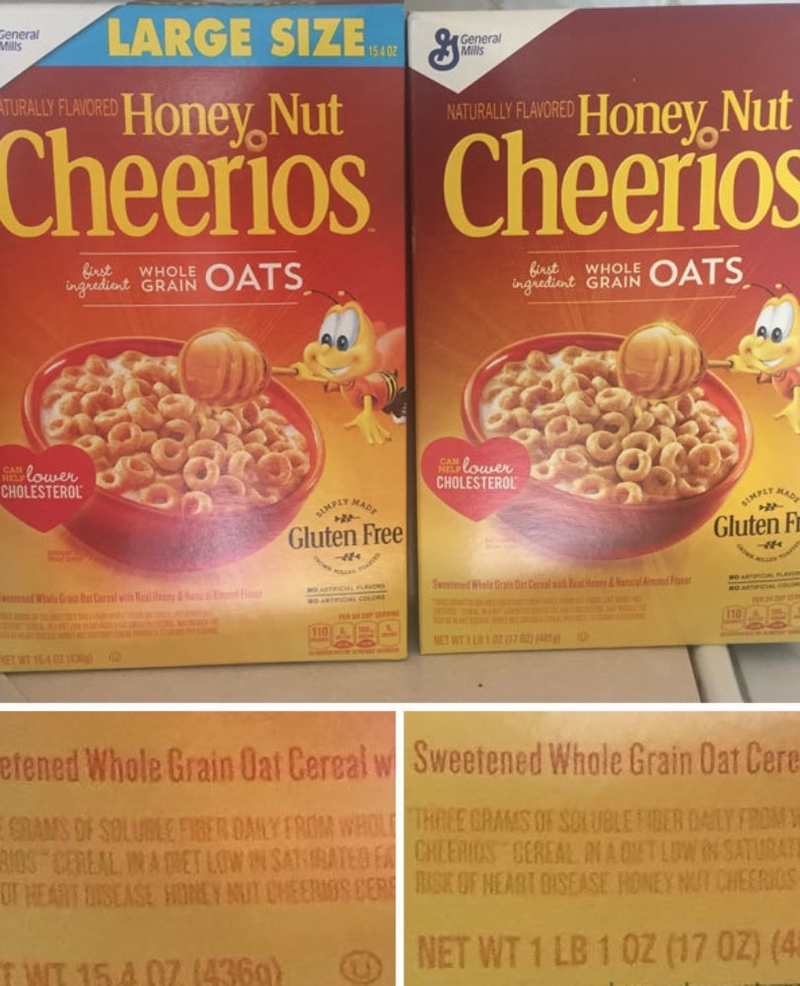
The Cheerios box weighs less than the standard size box, 5.4 ounces versus 17 ounces found in the usual offering. Cheerios, shame on you!
Soft Serve Society
Wow, just when you thought that companies couldn’t get any lower – Soft Serve Society in London pulled this trick. If they cared about their customers and the future of their business, a ploy like this might not be the best idea. When you ask for large ice cream, one would expect to receive a large ice cream.
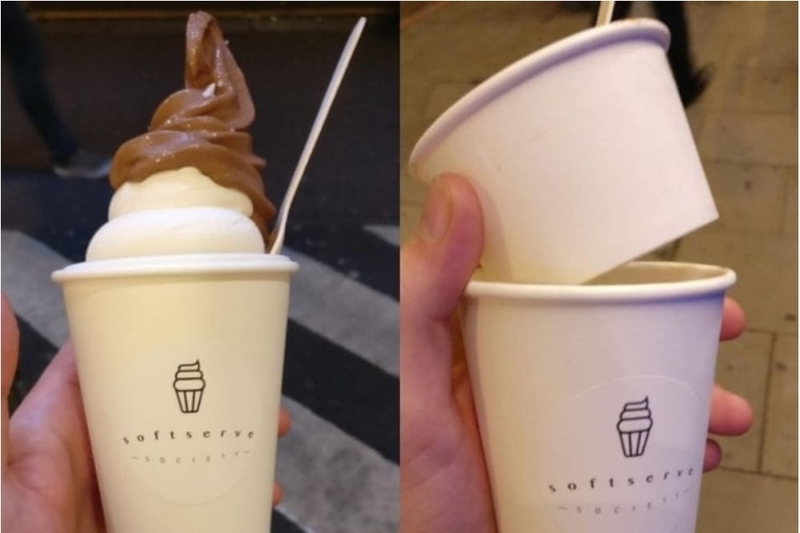
Soft Serve Society decided to put a small ice cream cut into a larger one to make it look more appetizing. Still, this packaging illusion probably had many customers melting (no pun intended) with anger!
Nike
The world is saturated with fitness devices, from Apple Watches to Fitbits, it seems like gadgets are here to stay. Nike also wanted in on the action and released its FuelBand, a pioneering concept in some aspects.
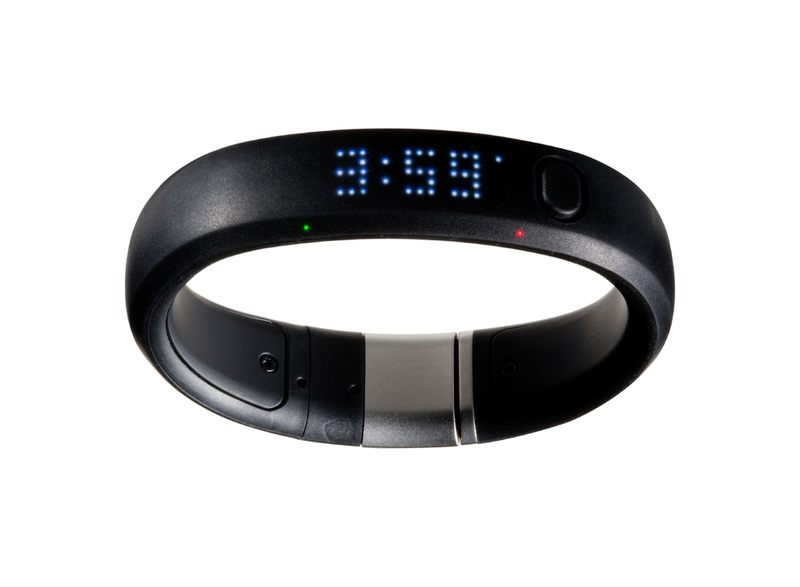
But, the FuelBand was worthless to anyone who didn’t own a Nike+ product, a product that hadn’t been heavily advertised. The fact that everyone was manufacturing fitness trackers made it hard for Nike to keep up its game, and after a few years, it was discontinued.
Kylie Skin
Though she may the world’s world’s youngest self-made billionaire, Kylie Jenner’s Kylie Skin skincare line was turning heads, and not in a good way. When she released a walnut scrub, dermatologists had their doubts when it came to the ingredients.
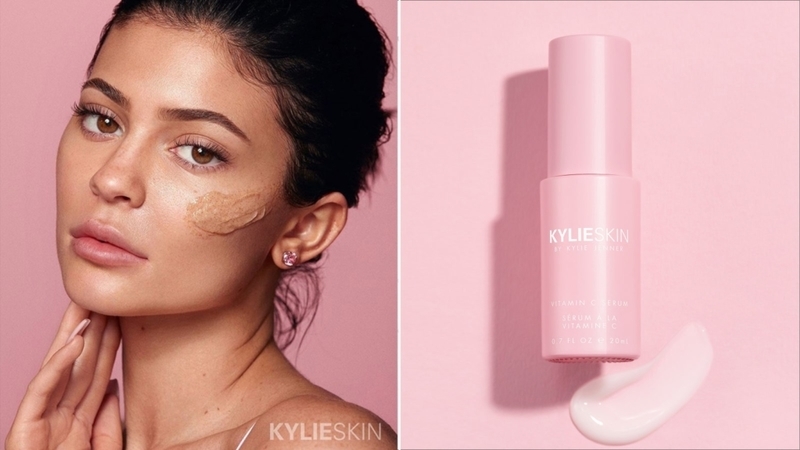
It turns out, crushed walnuts, which are the main ingredient in this product, have been proven to cause more damage than good to the skin.
Natrol
We guess the saying “bigger is better” isn’t always true. Just ask Natrol buyers – they know! Natrol manufacturers realized this might be the best way to get customers to spend more money on fewer pills; just put them in a bigger bottle!
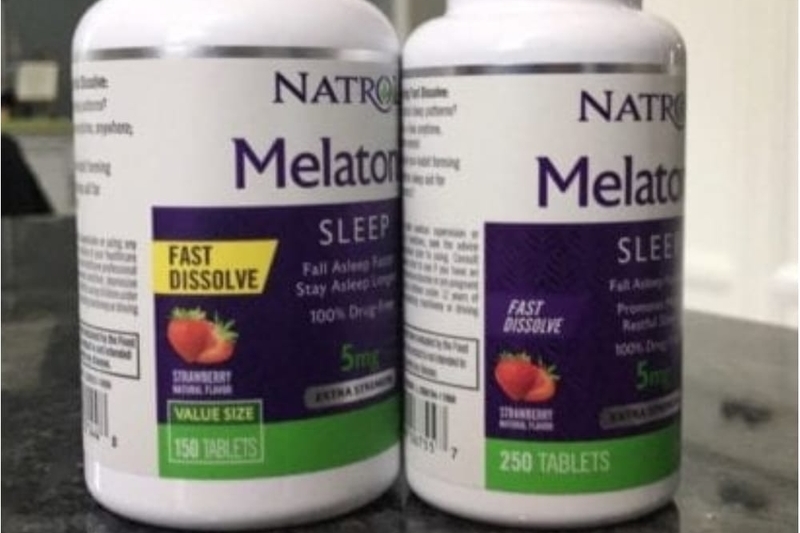
Only real MVPs know that to beat the system, you’ve got to read the bottle. Here’s to all the people that read and compare bottles; you deserve this win and any other win to come in the future!
3D Television
Welcome to the future, where everyone gets a 3D television! It may have seemed like a good idea at the time, but with several companies attempting and failing, it doesn’t seem to be a venture worth spending time and money on.

It was priced high for obvious reasons, but mix that and its mediocre performance, and you’re in for a disappointing combination. At one point, the whole seemed like a ploy to get people to buy the most expensive televisions on the shelf with no real justification.
HP Touchpad
In 2011, HP learned the hard way that you shouldn’t do things casually in an attempt to rival the Apple iPad. The problems they faced were rushing production for another company’s idea, so not only were they unoriginal, but they were in a hurry to get it off the ground, which they never really did.
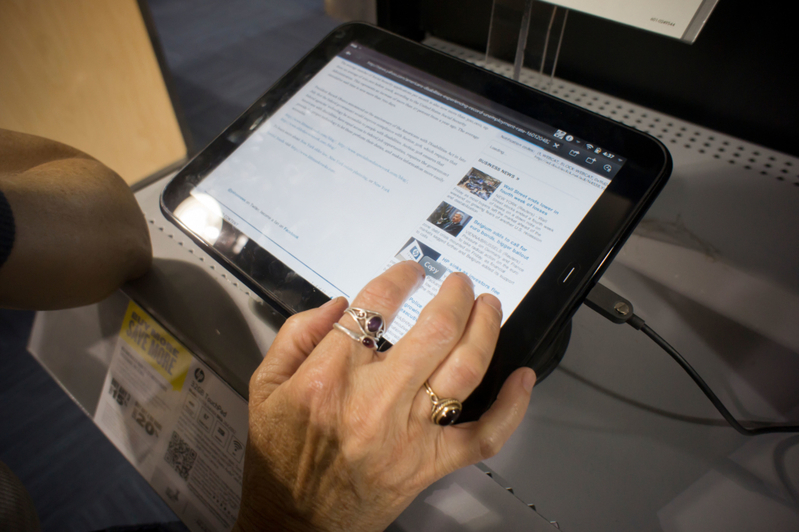
With its faulty software, lousy marketing, along with many other disappointing factors, the Touchpad is an example of how *not* to create and release a tech product.
Santitas
We all know the feeling; once we pick up a bag of our favorite kind of chips, we excitedly wait for the chance to eat them in peace on the couch with our significant other. But when we tear into them, that enormous bag we were going to split with our other half is only about half full.
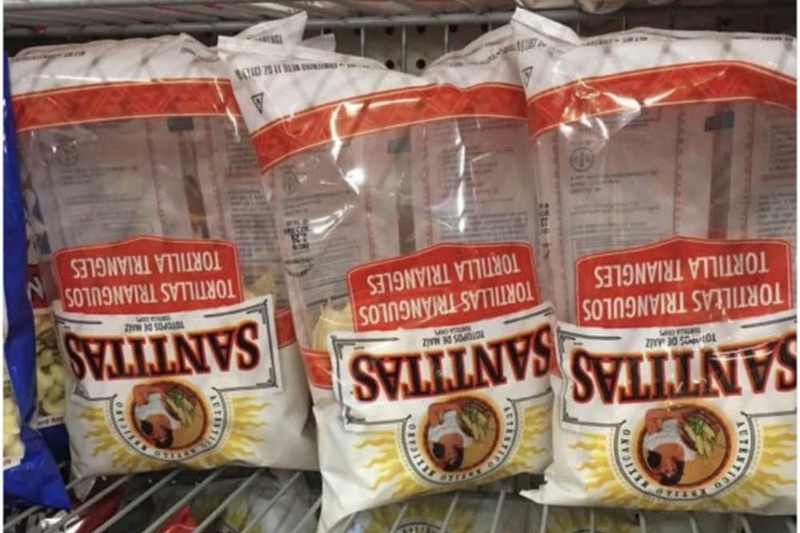
With a great, big sigh of disbelief, we become so frustrated with this crime that we start to wonder whether or not it’s time to give the single life a try.
Pâté
Though it is known as a delicacy worldwide, it seems like very few people actually encounter pâté in their everyday life. Keeping that in mind, if you love pâté, you’re in for a surprise…not a good kind of surprise, though.
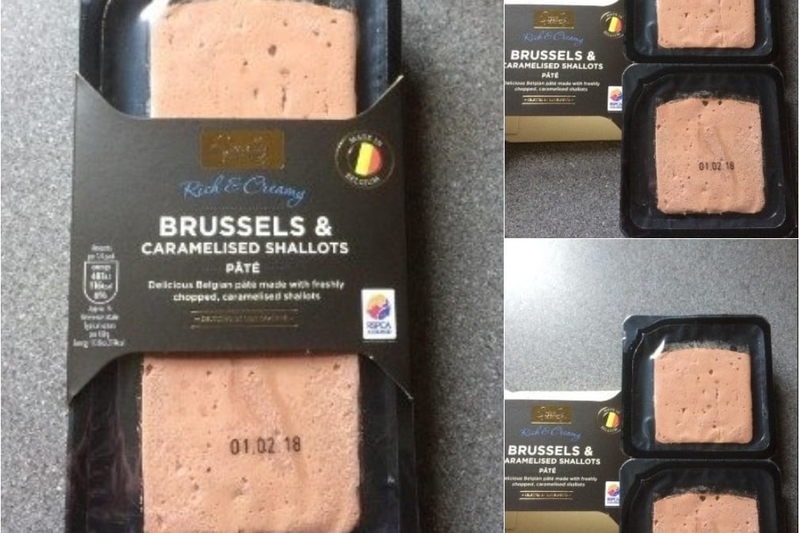
This pâté company completely misled consumers with their packaging. Not only does it look like you’re getting nearly twice as much bang for your buck, but the packaging is so fancy, there’s no way they could deceive you. …Or is there?
Hershey’s
The name Hershey’s has become synonymous with chocolate; we can all agree on that, right? Needless to say, when it comes to Hershey’s products, we expect a little more. This solid milk Stanley Cup – one would expect – to be a full chocolate statue.
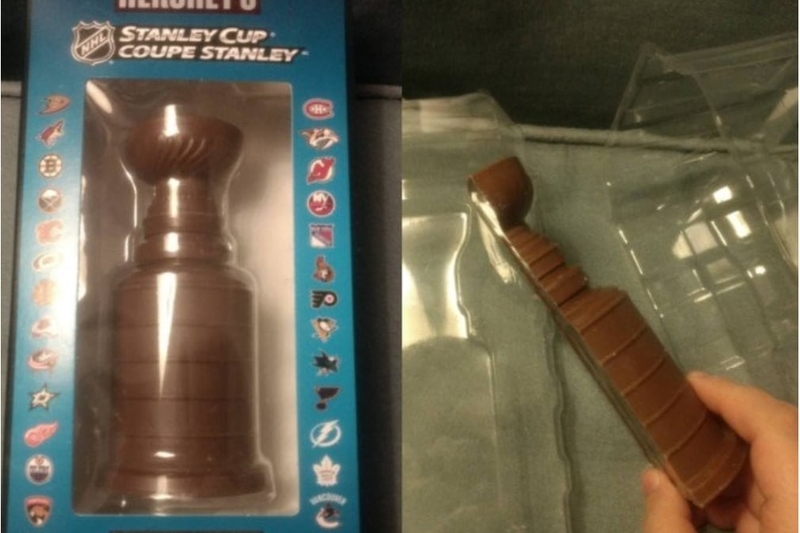
Why would we ever expect half of one? Alas, what you see isn’t always what you get. If they were looking to save chocolate, wouldn’t it have made more sense to make the chocolate cup hollow? Just a thought!
Olio
We all know that going to the grocery store means you’ll be confronted with an overwhelming number of choices when it comes to cooking oils. If you’re looking for olive oil, this bottle of Olio may stand out. After all, the words “olive oil” stand out in big, bold letters.
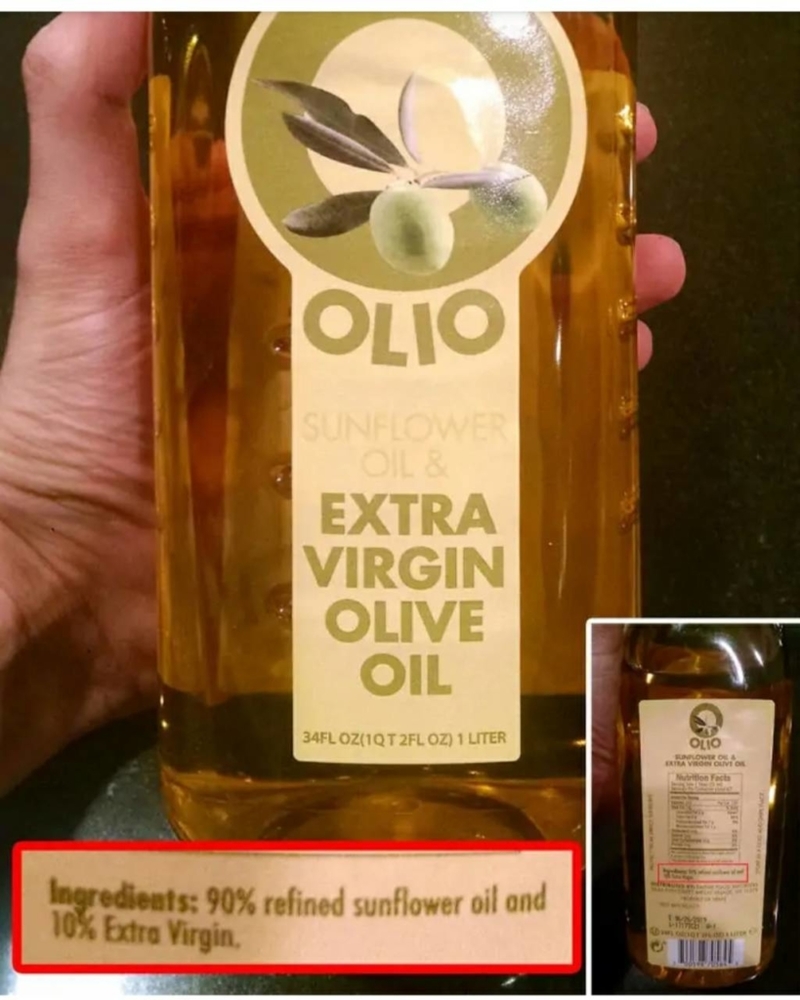
The words “sunflower oil,” on the other hand, are cleverly hidden, so you won’t know that you’re only getting 10% olive oil. Look again, yes, right there! 90% sunflower oil and 10% olive oil – this was not an accident!
Snickers
When we talk about trust issues, this is what we mean. When you advertise a Snickers bar that is twice the size of the regular one, make sure you get rid of all the regular Snickers candy bars in sight. Otherwise, consumers will catch on to you pretty fast, as they did here.
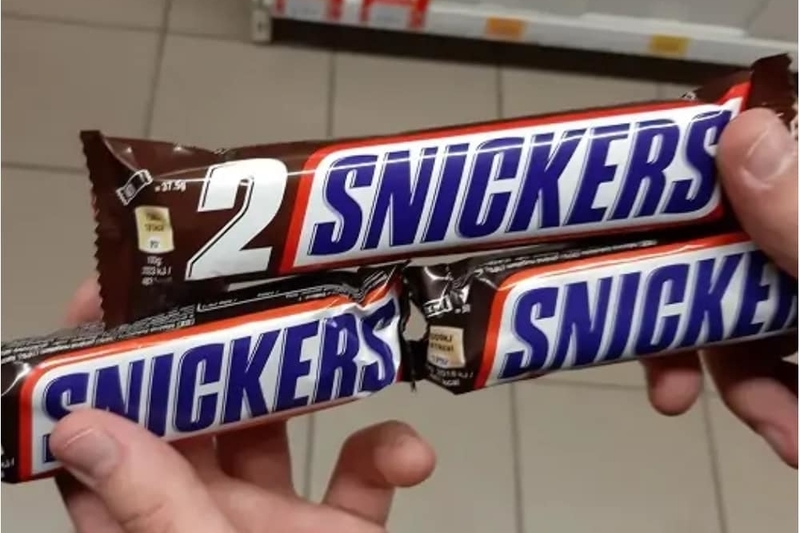
It’s like Snickers didn’t think anyone would bother making a size comparison. We can’t speak for you, but we know we won’t be falling for this offensive display of marketing any time soon!
Wesson
It seems like the label “natural” doesn’t really mean anything these days. Especially when it comes to advertising, these labels seem like just another marketing tool. Natural can be applied to anything as long as it doesn’t contain artificial flavors, synthetic substances, or added color.
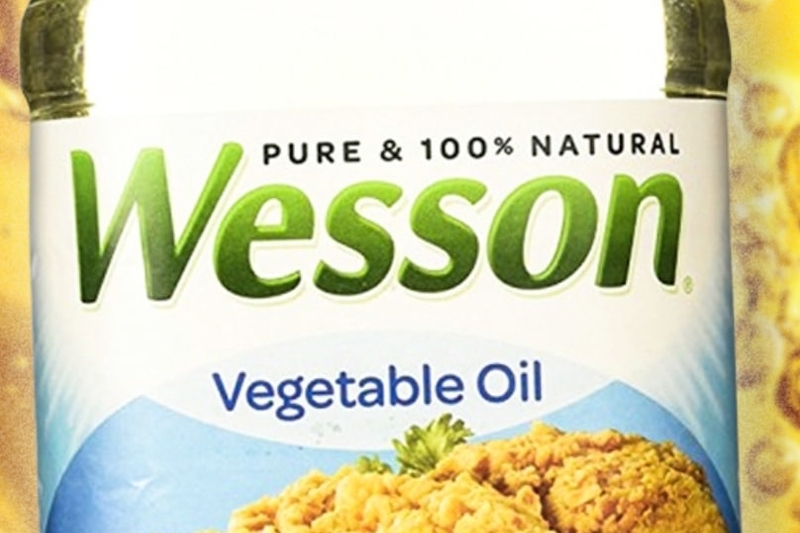
That being said, “natural” doesn’t apply to the use of pesticides, hormones, or antibiotics, or foods containing natural sweeteners like high fructose corn syrup. Naturally, we’re upset!
Calavo
Calavo prides itself on being sustainable and environmentally friendly, which is weird because they decided to peel and package an avocado. It’s as if they didn’t realize that avocados already come in their own natural and compostable packaging! Calavo precut this avocado, wrapped it in plastic, and then again in cardboard.
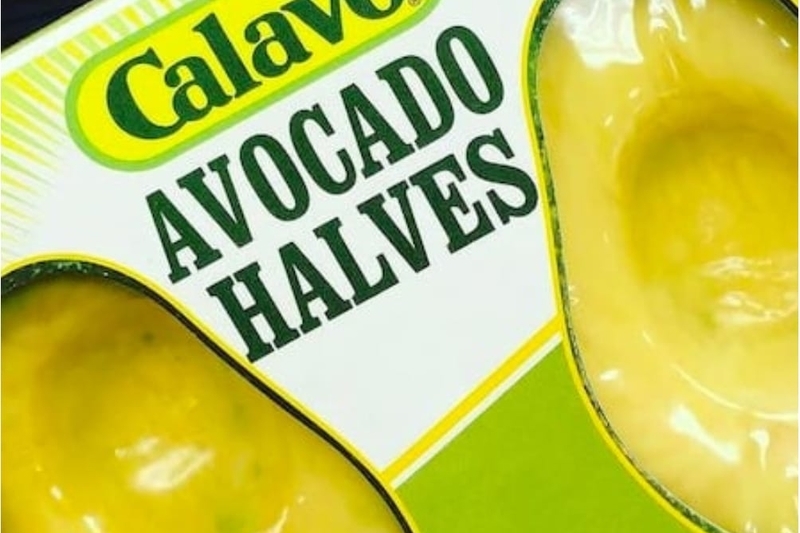
Environmentally friendly? More like the complete opposite! When consumers realized what the company was doing, they posted this photo onto social media, and the unsettling truth went viral!
Starbucks
If there’s one reason people wait for all-year-round for fall, it’s Starbucks’s Pumpkin Spice Latte. At first, it seemed like there was no reason not to love the sweet latte; it even gained itself a cult-like following. That was when in 2015, food blogger Vani Hair, also known as Food Babe, revealed that there was no pumpkin in the Pumpkin Spice Latte.
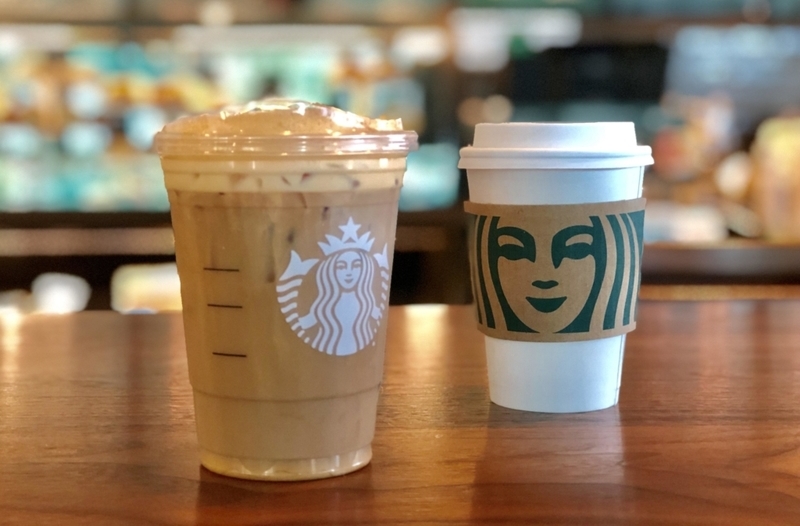
It has many other – not so healthy – ingredients. All of that being said, it hasn’t stopped the masses from lining up at Starbucks the moment leaves start changing colors.
Subway
A classic scam; the footlong sub was never really a foot long. When it was measured, the sandwich came to be only 11 inches. When trying to defend their decision, Subway said that their “Footlong Sub” is just a trademark as a descriptive name for the sub and was not intended to measure length.
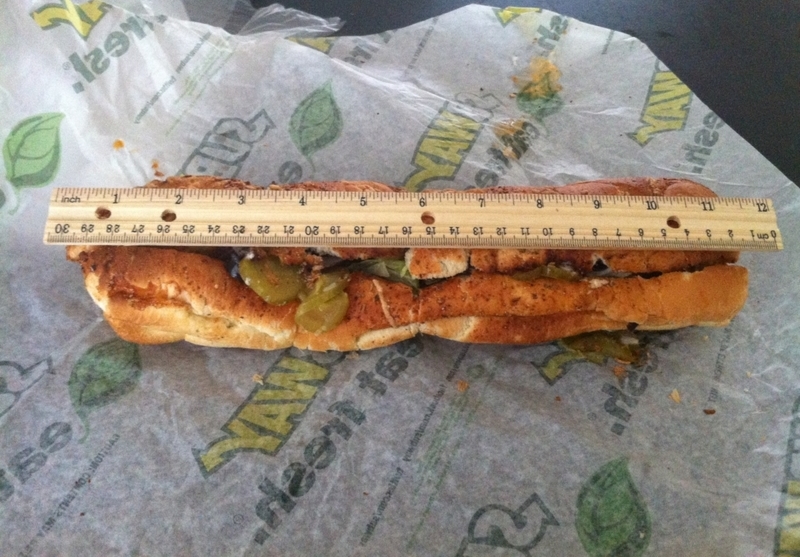
Recently, the cost of the famous sandwich jumped from $5 to $6, so we’re hoping they changed its length to the advertised size!
Peppermint Cream
Many things differentiate the European Union and the United States; it turns out, the packaging is one of them! Organic farming, production, and labeling have been regulated in the European Union since 1991. Meaning, this kind of packaging would be banned in the European Union.
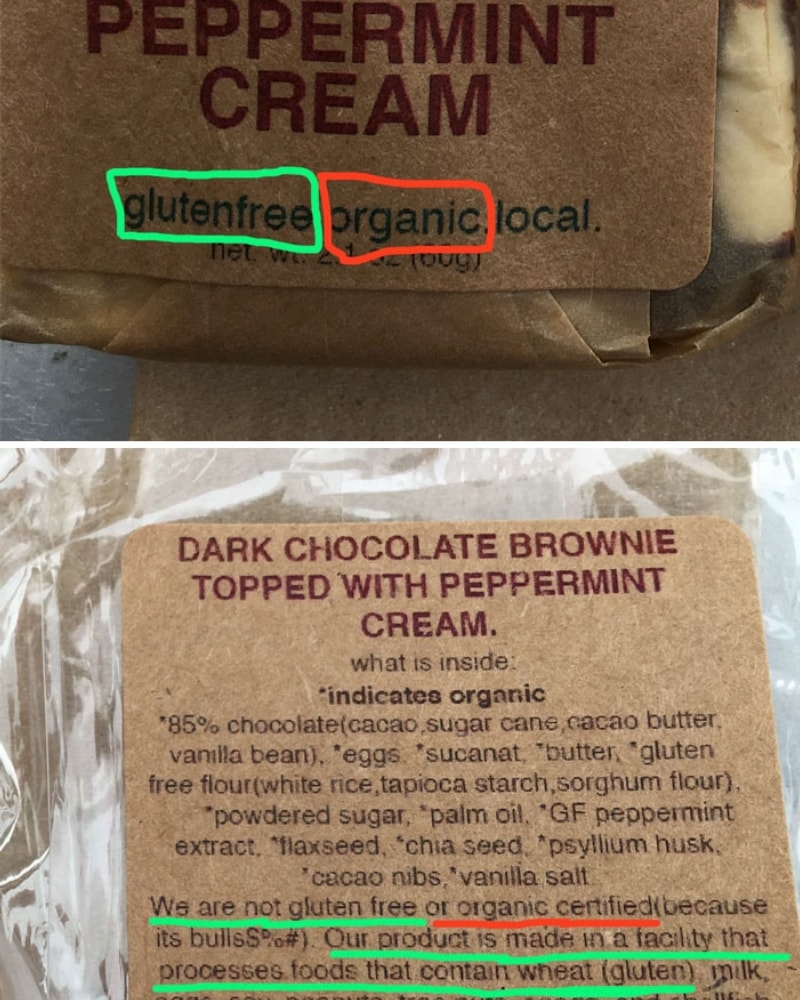
In the United States, on the other hand, the organic food industry seems to be making more and more money every year. That’s probably why regular companies decide to label their foods organic and gluten-free even when they’re not! Horrific and dangerous, to say the least!
Pizza Hut
We’re sorry to be the ones that burst your bubble when it comes to Pizza Hut, but someone has to do it. Some judge their pizzas based on their crust, while others judge based on their cheesy goodness. But in order to judge the quality of the cheese, you’ve got to be sure you’re eating a real cheese pizza.
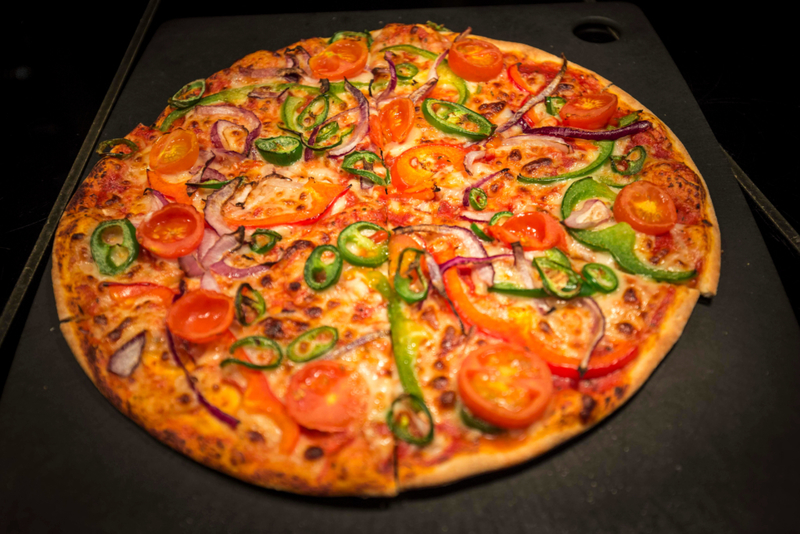
A couple of years back, health inspectors from the UK standards department tests fast-food pizzas for authenticity and discovered that nearly all of the pizzas (including Pizza Hut) were made with imitation cheese. We don’t want to know what exactly fake cheese entails, but we’re hoping Pizza Hut learned its lesson!
Aberdeen Square
Well, isn’t this ad a roller coaster of emotions? At first, you’re upset because you think you just received a parking ticket, then you’re relieved it isn’t a parking ticket, but then you’re upset again because someone tricked you into thinking you just got a parking ticket.
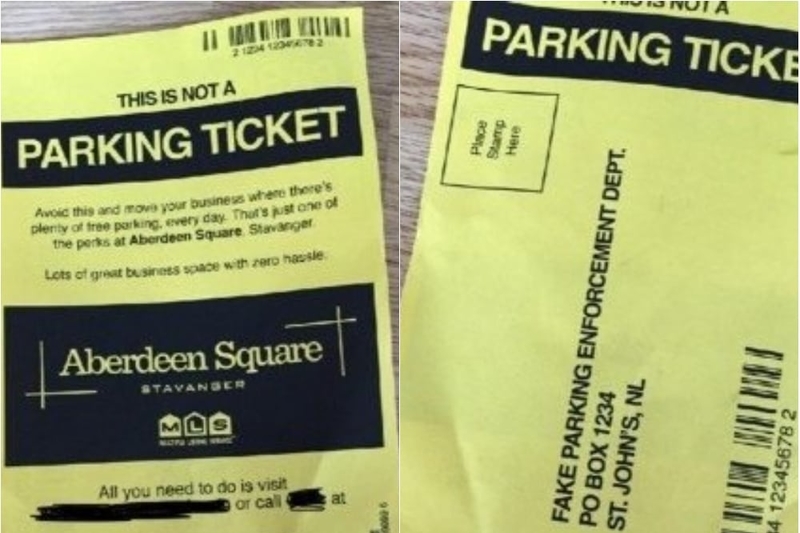
Honestly, how is this marketing technique even legal? In our opinion, it isn’t even funny; if anything, it’s the perfect way to make prospective customers take their business elsewhere!
Panera Bread
Believe it or not, Panera Bread has been caught red-handed manipulating customers. Yes, the Panera crew does bake their bread on the spot, but that doesn’t mean the dough is made from scratch at that same location.
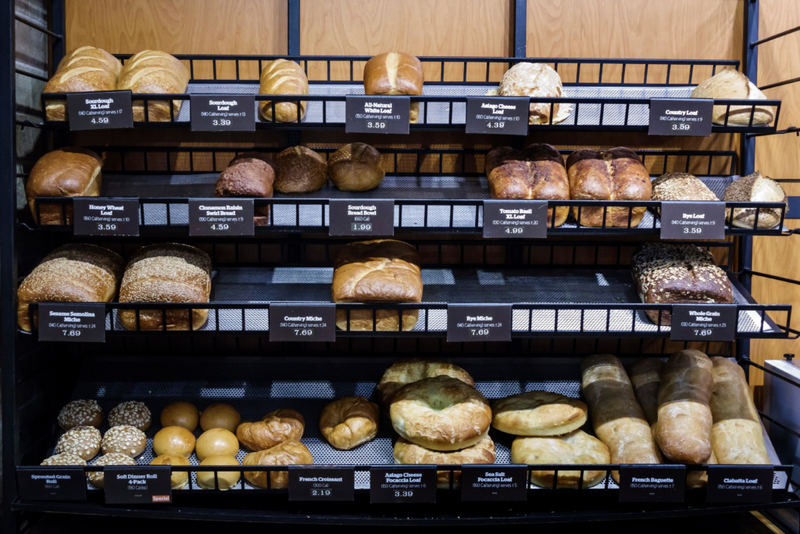
Prepared dough arrives every day and may or may not be frozen. So, you may be eating fresh bread, just not completely fresh.
Kellogg’s Frosted Mini-Wheats
Is it just us, or should cereal companies probably refrain from making promises they can’t keep? Kellogg’s learned this lesson the hard way when they declared that eating a bowl of their Frosted Mini-Wheats cereal for breakfast was clinically proven to improve attentiveness by nearly 20%. Awkward!
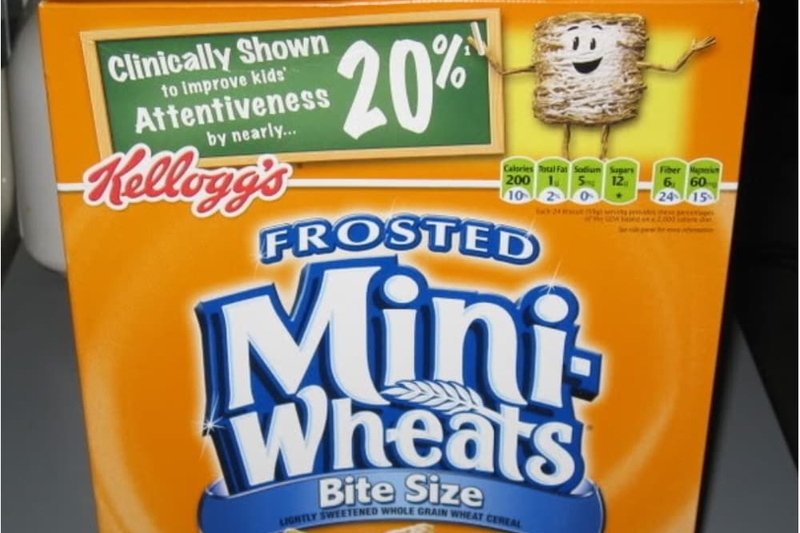
Their false advertising cost them $4 million to reimburse misled customers who bought the cereal between 2008 and 2009.
Nerf
Who didn’t love to have a safety-conscious brawl with friends with Nerfs back in the day? We know we did! While this may seem like the Nerf enthusiast’s biggest dream, you’re subject to quite the optical illusion.
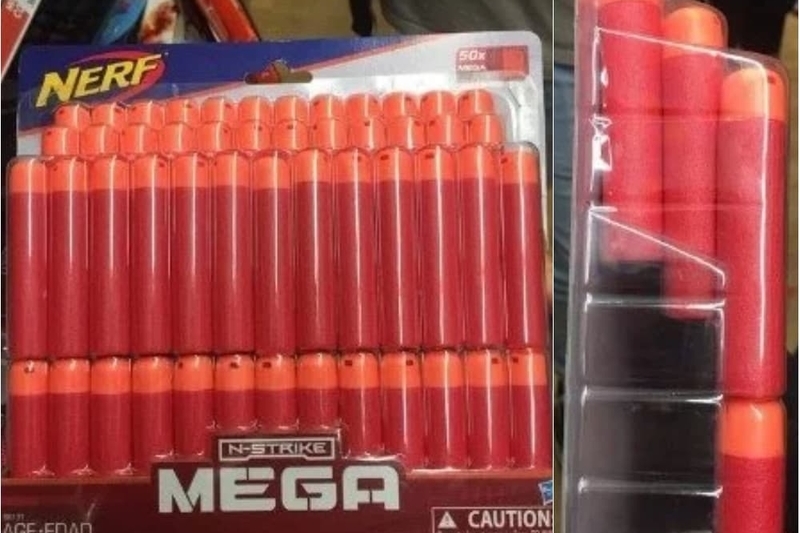
The manufacture of this dart package created this scam by stacking the ones at the back. It definitely had us fooled!
Skittles
Growing up, Skittles was always one of our favorite candies. The sensation of biting through the hard shell into a fruity, chewy center full of colors and flavors is one that always brings us back to the good old days. Who doesn’t love tasting the rainbow?
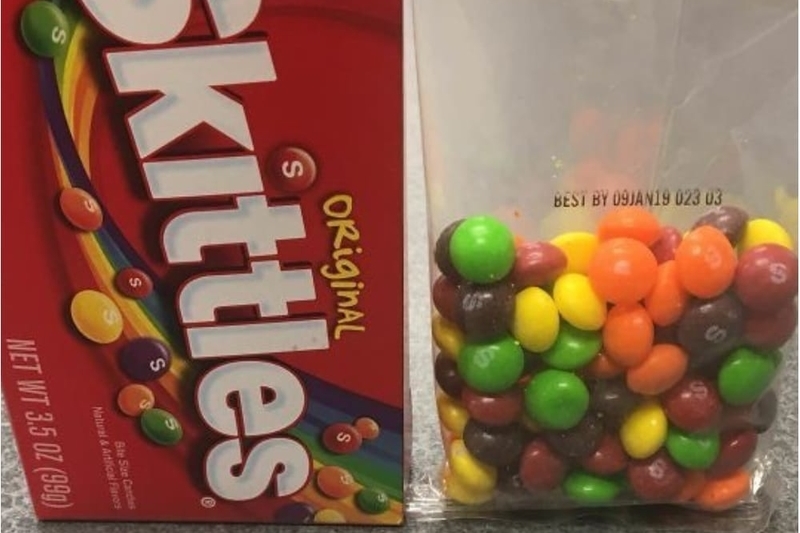
Well, apparently, some of our fondest childhood memories were cut into two…or less. Skittles manufacturers include a bag of less than half of what is advertised. Taste the rainbow? More like more rain on our parade!
McDonald’s
As hard as it is for us to admit it, there’s something about fast-food chain’s hamburger ads that have us instantly craving fast food. Whenever you find yourself fighting these cravings, just remember that the hamburger ad is perhaps the furthest thing from what you’re actually going to get when you order.
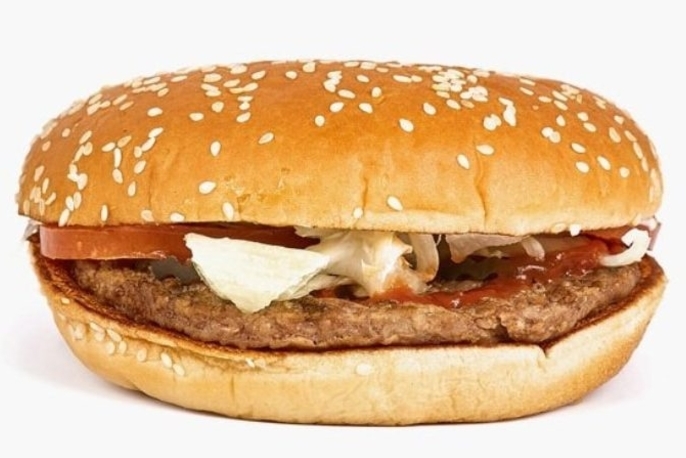
You’ll probably be served with fast food that doesn’t look anything like you expected. Who knew models weren’t the only thing being airbrushed before being placed in ads?!
Quorn Mini Sausage Rolls
Leave it to an asterisk to frame the Quorn Mini Sausage Rolls in their false advertising. There are only three sausage rolls in this package, but if you cut them into four, you get twelve mini rolls. It’s simple math, really. If you wanted to, you could get 18 rolls, or even 24.
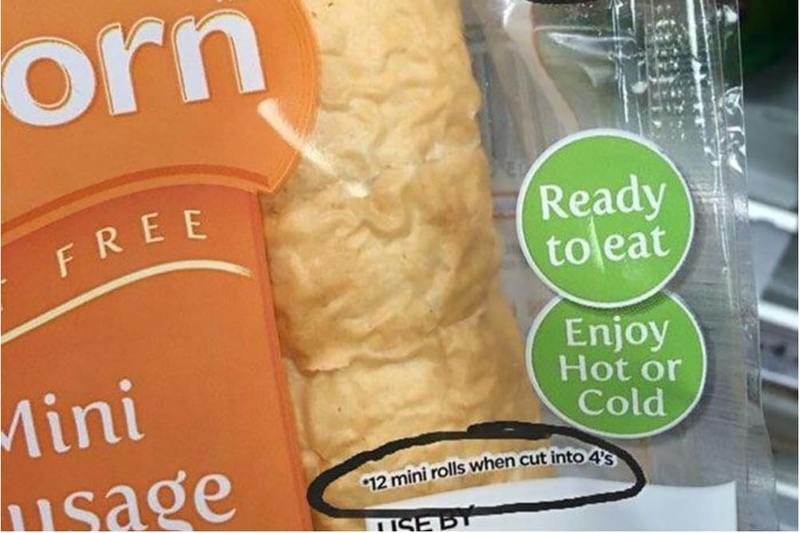
We’re no sausage rolls experts, but we’re pretty sure the point of buying these rolls is to fit a full sausage in it and not have to cut them into twelve bite-size rolls. If this was a product Quorn was proud of, they better rethink their marketing strategy.
M&M’s
What is the story behind this old ruse? To most of us, M&Ms are a delicious snack we’ve enjoyed since childhood, but to the internet, this kind of trickery is oh-so-much more.
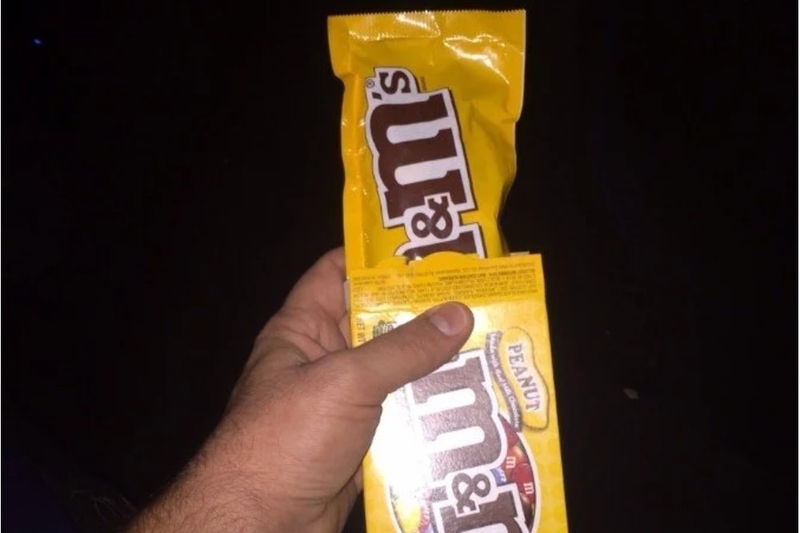
So why the box and the bag? M&M’s decision to put a bag inside a box seems really silly because we were expecting more M&M’s – not just a regular bag of M&Ms! Not only is this disappointing, but it’s such a waste of packaging. Come on, M&Ms, we expected more of you!
Pepperoni Pizza
Is there anything better than a pizza that’s packed with pepperoni, is there? When you’re picking out the perfect pizza, it’s the thing to look out for. That is, until you open the box only to discover it was all a hoax!
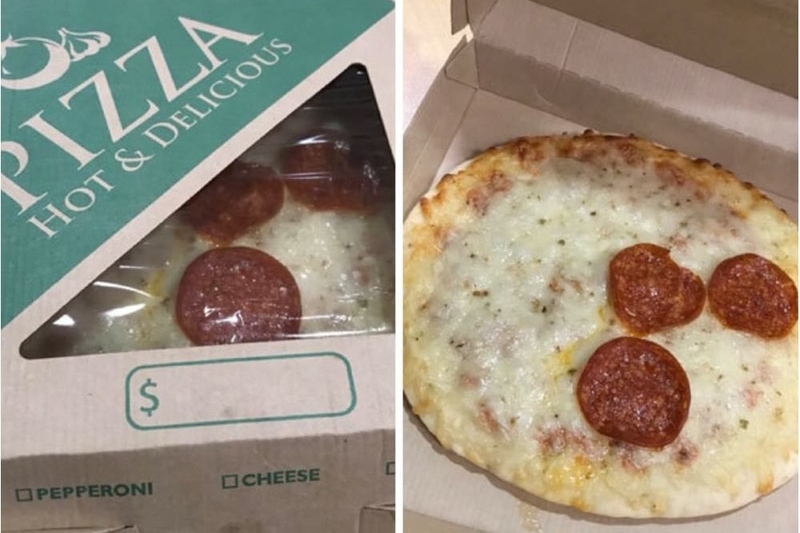
Those three pepperonis peeking through the box waiting for you to take them home were the only ones on it. Have no fear, fellow pepperoni lovers; we’re here to expose this corporation’s greed and remind you to double-check your whole pizza before bringing it home!
Morello
Jokes on you! Morello didn’t promise anything, so it’s completely our fault that we thought that this chocolate box was full of chocolate. Though we are just as upset as you are by this betrayal, we guess this is a “what you see what you get” kind of situation.
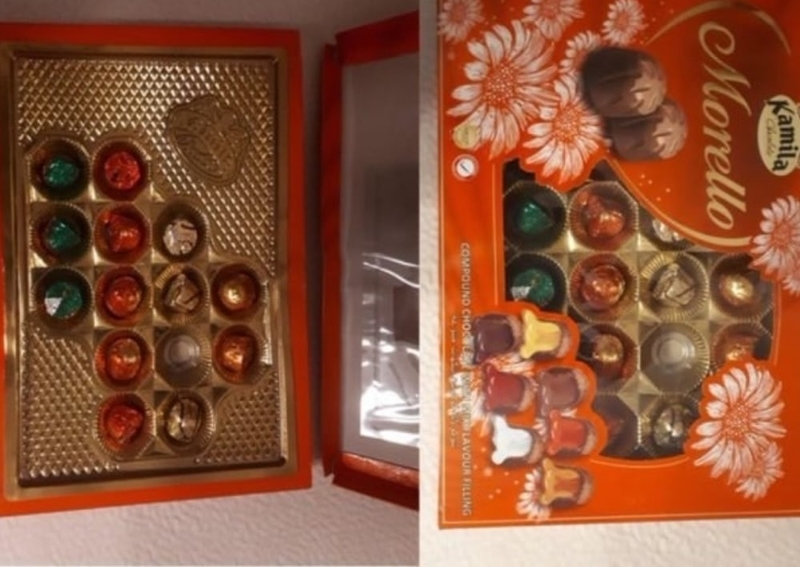
This strategy is the perfect way to ensure few repeat customers. However, if we’re being honest, isn’t this assortment of chocolate the kind you receive as a holiday gift and then regift at your next dinner party?
Dove
If you’ve ever opened a bag of potato chips, you know that some packaging deliberately created the impression that a product renders more than it does. Though some companies may think it’s worth their while to mislead customers to drive a higher profit, in the long run, it isn’t such a wise practice.
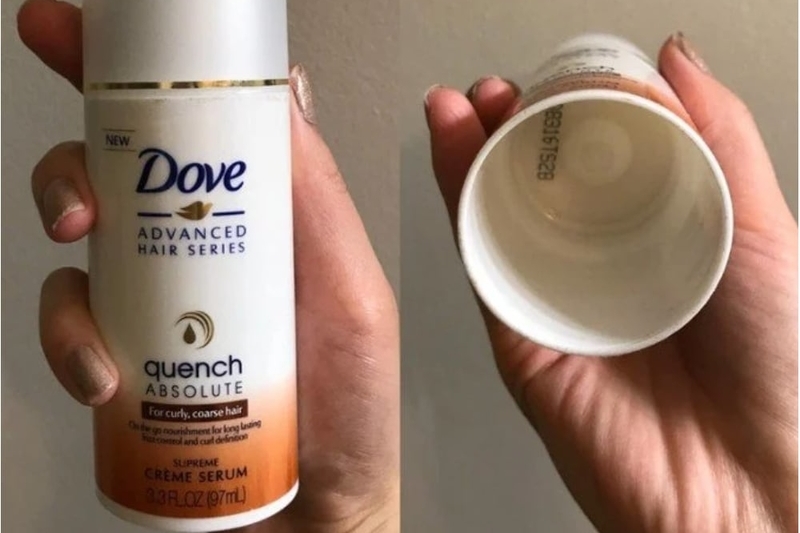
Considering everything these days goes viral, all you need is one angry customer to catch onto your scam, and it’ll be plastered all over the internet!
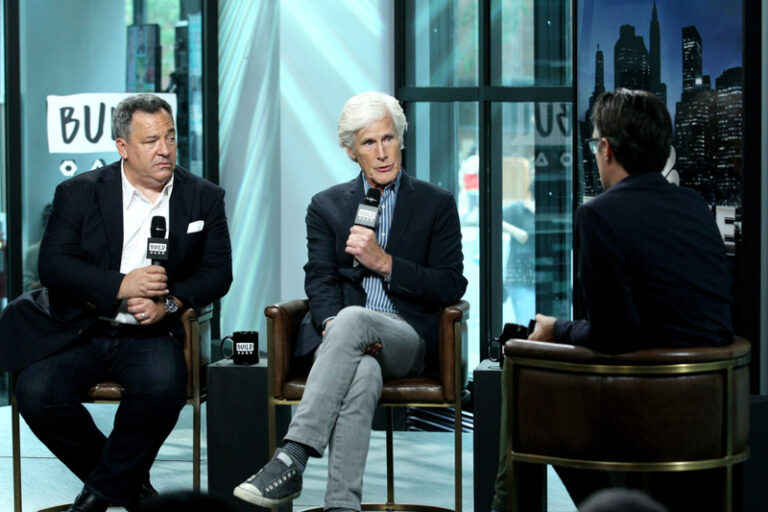
Even More Things Baby Boomers Think Are Cool

All In the Family. Hilarious and Heart Warming Family Moments

The World’s Most Ferocious Special Forces
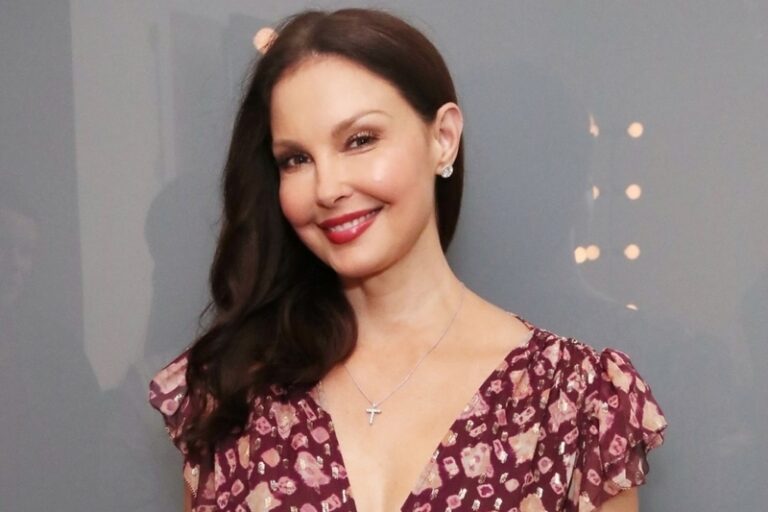
More Hollywood Celebs With Surprisingly High IQs

Richard Gere & Alejandra Silva’s Touching Love Story
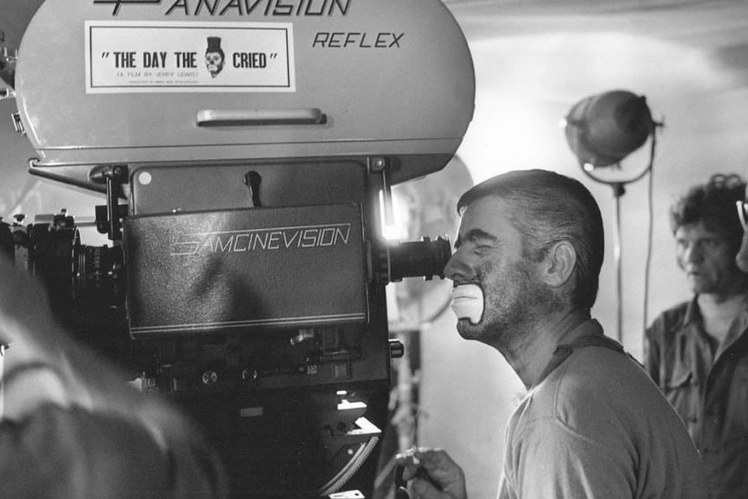
A Journey Through the Life of the King of Comedy – Jerry Lewis

Wedding Dresses Like You Have Never Seen Before

More Of The Best Small Towns Across America

More 50s-70s Teen Idols Who Are Not All Fame and Fortune

The Real Voices Behind the Mask: Who Voiced Our Childhood Heroes?
